admin
Book Spine Design Tips: How to Make Your Book Stand Out
Table of Contents:
1. Introduction
1.1 Designing A Spine That Catches The Eye
2. Understanding The Book Spine
2.1 What Is A Book Spine?
2.2 The Importance Of A Book Spine
2.3 The Function Of A Book Spine
2.4 What Can Be Included On A Book Spine
3. Types Of Book Spine Designs
4. Bad Book Spine Designs: What To Avoid
5. How Book Spines Are Manufactured
5.1 Perfect Binding
5.2 Basic Trimming Margins
5.3 What is Bleed?
5.4 Spine Width
5.5 Spine Position
5.6 Spine Text
6. How to Design an Amazing Book Spine
6.1 Selecting the Spine Background
6.1.1 Importance of Color Psychology
6.1.2 Coherence with Overall Design
6.1.3 Visibility Factor
6.2 Arranging the Spine Type
6.2.1 Font Selection
6.2.2 Spine Font Size and Scaling
6.2.3 Spine Text Positioning
6.2.4 Balancing Elements
6.3 Designing a Spine for a Book Series
6.3.1 Consistent Theme Across the Series
6.3.2 Series Numbering
6.3.3 Differentiating Each Book
6.3.4 Coherence with Front and Back Cover
6.4 Creating a Unique and Attractive Spine Design
6.4.1 Visual Appeal
6.4.1.1 Contrasting Colors
6.4.1.2 Distinctive Logos
6.4.1.3 Importance of Branding
6.4.1.4 Design Considerations
6.4.1.5 Case Studies
6.4.1.6 Decorative Elements and Unique Materials
6.4.2 Complexity and Simplicity
Sources:
1. Introduction
Book spine design is a critical element in the realm of publishing. It can significantly influence a book’s journey from the shelf into the reader’s hands. Unfortunately, it’s often overlooked, While a book cover might be the face of a story, the spine is its voice on the shelf, calling out to potential readers. We’ll explore the importance of book spine design in the competitive bookselling market. How its role is life-critical in drawing readers’ attention and highlighting your book’s distinct character.
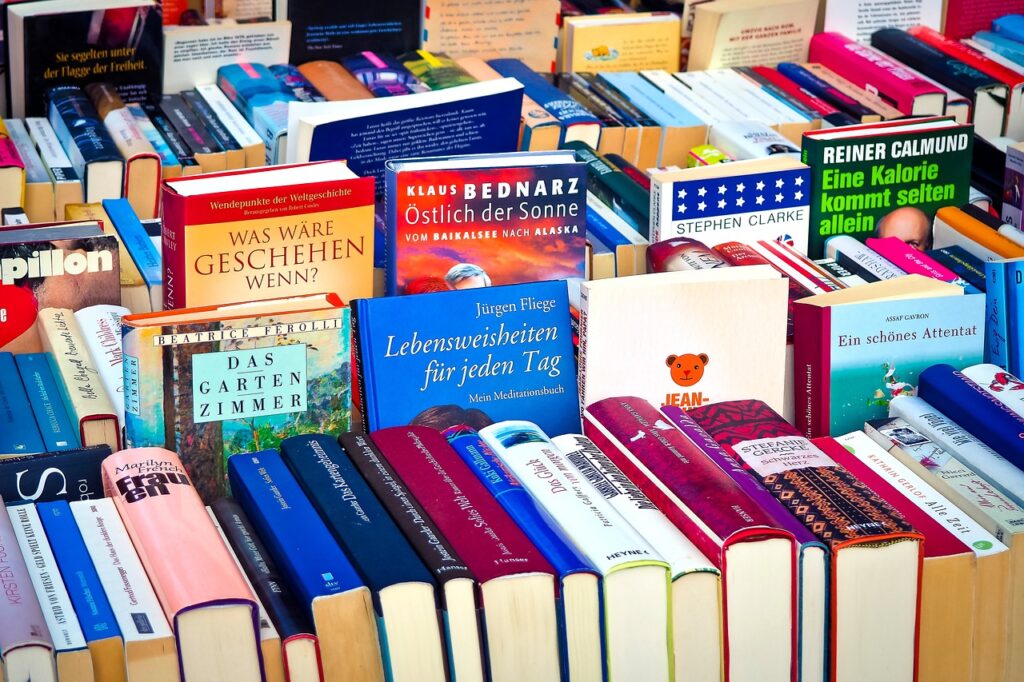
Consider a stroll through a bookstore or a library. The first aspect that catches a reader’s eye on a book shelf, isn’t the front cover. It’s the book spines lining the shelves. These spines, standing shoulder to shoulder, hold the fate of the book in their slender dimensions. They are the factor that often influences a reader’s decision to extend their hand, pull a book from the shelf, and turn it over to read more. In this pivital moment, a well-designed spine can set a book apart from its neighbors, enticing readers with its allure.
1.1 Designing A Spine That Catches The Eye
Crafting a book spine that stands out is both an art and a strategic endeavor. This blog post unravels the nuances of designing a spine that catches the eye and encapsulates the essence of the book. From the interplay of colors and typography to the subtle use of imagery and texture, we will explore the tips and techniques that can transform your book’s spine into a magnet for readers’ attention. In short,
- How to make your book stand out
- How to attract and entice new readers
- How to showcase your book’s unique identity
Whether you are an author, a designer, or a publisher, understanding the intricacies of book spine design is crucial. It’s not just about making a book look attractive on the shelf. It’s about giving your book a voice in a crowded room. Even before turning its pages, it has a chance to tell its story.

2. Understanding The Book Spine
2.1 What Is A Book Spine?
Before diving into design tips, it’s essential to understand what a book spine is and the crucial role it plays. The book spine connects the front and back covers of the book. It’s the outside portion of a book that becomes visible when shelved. It’s not just a structural element. It’s the backbone of the book, both literally and figuratively.

2.2 The Importance Of A Book Spine
The book spine indeed plays a pivotal role in shaping a book’s identity. When placing a book on a shelf, as stated above, the spine becomes the most visible part, making it the first point of contact for potential readers. This visibility makes the spine a crucial element in a reader’s decision-making process when choosing a book.
A well-designed book spine can instantly grab a reader’s attention, piquing their curiosity and enticing them to pick up the book and learn more about its content. It can convey critical information about the book. Things the title, author’s name, and publisher, and more in a clear and concise manner. Moreover, the design, color, and typography used on the spine can give a glimpse into the book’s genre and tone, helping readers quickly identify if the book aligns with their interests.
A poorly designed book spine can easily blend into the sea of books on a shelf, reducing its likelihood of catching the attention of potential readers. It could also misrepresent the book’s content, leading to missed opportunities for reaching the right audience.
Therefore, investing time and effort into designing an appealing book spine can significantly enhance a book’s appeal and success. It can help your book to stand out in a crowded marketplace, attract the right readers, and ultimately increase the likelihood of your book being read. So, the impact of a well-designed book spine extends beyond aesthetics; it’s a strategic tool for marketing and selling your book.
2.3 The Function Of A Book Spine
The primary function of a book spine is to bind the pages together and ensure the book opens and closes without damaging the pages. This structural aspect of the spine is crucial. It holds the book together and provides the necessary hinge action that allows for easy reading. A well-crafted spine ensures that the book withstands repeated handling and the stresses of opening and closing over time, thus preserving the book’s integrity.
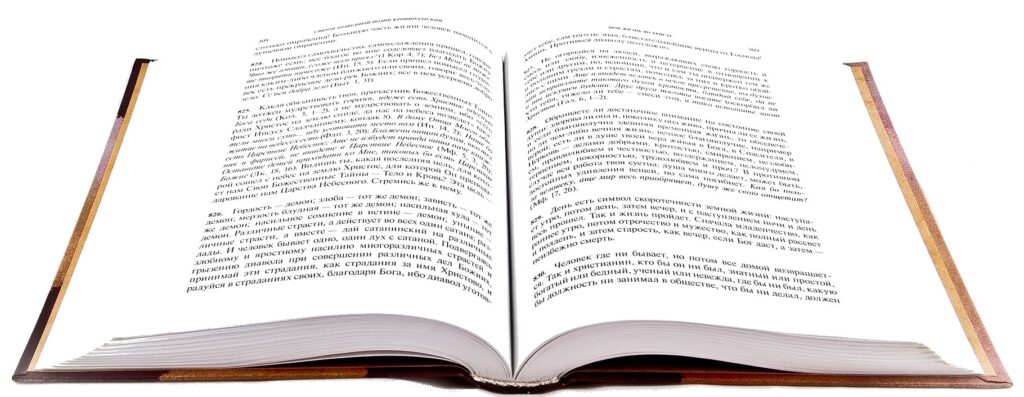
But the role of a book spine extends far beyond just practicality. It plays a vital part in the book’s overall durability and usability. A robust spine prevents pages from becoming loose or falling out, ensuring a long life for the book. Additionally, the spine can affect the book’s opening behavior – whether it lies flat when open, how wide it can open, and how comfortable it is to hold while reading.
Moreover, the spine of a book has an essential role in storage and retrieval. On bookshelves, where only the spines are usually visible, the spine becomes the book’s face in many situations. It’s the first point of contact for potential readers browsing through shelves. It’s the element of the book that conveys critical information swiftly and effectively.
As an author, you also need to consider the type of format you will publish your book in. Will you select a hardcover format of a paperback format? In truth, each format has its unique strengths and weaknesses. It is vital to understand both and make an informed decision. Click this link to visit our blog post titled “Hardcover VS Paperback: Which is the Better Choice?“.
2.4 What Can Be Included On A Book Spine
The spine of a book is more than just a structural element. It’s a mini billboard for the book, containing important information and helping to establish the book’s identity. Depending on the situation, ere are the essential elements that can be present on a book spine:
Title: The title is the most prominent text on the spine. Readers will see it first when your book lines up on a shelf with others.
Subtitle: If your book has a subtitle, it can also be included on the spine. However, due to space constraints, it may need to be abbreviated or omitted.
Image: Some books feature small images or icons on the spine that relate to the book’s content or theme.
Author‘s Name: The author’s name is another crucial element on the spine. This allows readers to find your book when browsing by author.
Publisher Identifier: This could be a logo, the publisher’s name, or both. It helps to establish the book’s provenance and can add an air of professionalism1.
ISBN Barcode: While not always included on the spine, some books feature the ISBN barcode here as well as on the back cover.
Book Design Elements: Colors, fonts, and graphics that are consistent with the book’s cover design can be extended to the spine. These elements help in creating a visual identity for the book and make it more recognizable on a shelf.
Volume Number: For books that are part of a series, the spine may include the volume number. This helps readers find the correct book in the sequence.
Remember, the spine of your book is prime real estate. It’s often the first thing potential readers see when your book is sitting on a shelf or book display stand. Each of the above elements plays a part in making your book easily identifiable and enticing to readers. A well-designed spine is a synergy of these components, harmoniously balanced to make your book stand out on any shelf it calls home. In addition, make sure to design it to grab attention and convey the essential information about your book.
3. Types Of Book Spine Designs
Various styles or types categorize book spine designs in the world of publishing. The exact number of distinct “kinds” is not fixed due to the creative and evolving nature of book design. Here are some common types of spine designs:
Text-Only Spines: These feature the title, author’s name, and sometimes the publisher logo or imprint. They are straightforward and common in academic or professional books.
Graphic Spines: These include graphic elements or artwork, often extending from the cover design. They are popular in fiction and children’s books.
Minimalist Spines: Featuring minimal design elements, often with a focus on typography and color.
Vintage or Classic Spines: These might feature ornate designs, traditional fonts, and embellishments reflective of historical design aesthetics.
Modern/Contemporary Spines: Utilizing contemporary design trends, often with bold typography, abstract graphics, and vibrant colors.
Series-Themed Spines: For book series, where each spine may contain a unique element but collectively form a cohesive design when placed side by side.
Photographic Spines: Using photographs as the primary design element.
Illustrated Spines: Featuring hand-drawn illustrations or artwork.
Textured or Embossed Spines: These have raised or textured elements that add a tactile dimension to the design.
Multicolored or Patterned Spines: Using multiple colors or patterns, often for visual impact on bookshelves.
Each of these design types serves a specific purpose and caters to a particular audience. The choice of spine design can significantly influence a book’s appeal and visibility on the shelf. Therefore, it’s crucial to consider these factors when designing a book spine.
4. Bad Book Spine Designs: What To Avoid
While designing a book spine, it’s crucial to avoid certain common mistakes that can detract from the book’s appeal. Here are some pitfalls to avoid:
Overloaded Space: Avoid overloading the spine with too much information or complex designs. A cluttered spine can be hard to read and may deter potential readers2.
Illegible Text: Ensure that the title and author’s name are legible and do not blend in with the background or decorations. The text should be clear and easy to read at a glance.
Incorrect Size: The spine size should be calculated correctly based on the page count, paper type, and cover material. An incorrectly sized spine can lead to design issues and may affect the book’s durability.
Poor Quality: Avoid poor quality or misaligned book spine designs. A well-designed, aligned spine not only looks professional but also ensures the book’s longevity.
Thin Spines with Text: For books ranging between 40 to 60 pages, the spine is often too thin to effectively accommodate text. In such cases, adding text to the spine is not advisable, as it becomes nearly impossible to read and can give the book a cluttered or unprofessional appearance3.
Remember, the best design for a book spine depends on the book’s genre, target audience, and the author’s personal style. It’s always a good idea to explore different designs and choose the one that best fits your book. Avoiding these common mistakes can help ensure that your book spine is both functional and aesthetically pleasing.
5. How Book Spines Are Manufactured
The manufacturing of book spines involves several steps and considerations. Here’s anoverview of the process:
5.1 Perfect Binding
This is the most common method of creating paperback book spines. It involves gluing the pages to the spine of the book cover. The result is a square, printable spine that can hold the book’s title, author’s name, and other information. The following video depicts a simplified version of this process on a hand-fed machine.
(Courtesy: https://youtu.be/n3Mk26PEnV0)
5.2 Basic Trimming Margins
To achieve uniformity, printers trim the pages and the cover of the book. In fact, this process ensures that all pages align perfectly with the book’s spine and cover. The standard measurements for book trimming margins are as follows:
- Side Book Margins: The minimum margins are 3/4″ on the spine side and 1/2″ on the outside4. This ensures that all pages align perfectly with the book’s spine and cover.
- Top/Bottom Book Margins: Allow 1/2″ top or bottom margin. This provides a balanced and aesthetically pleasing look to the page.
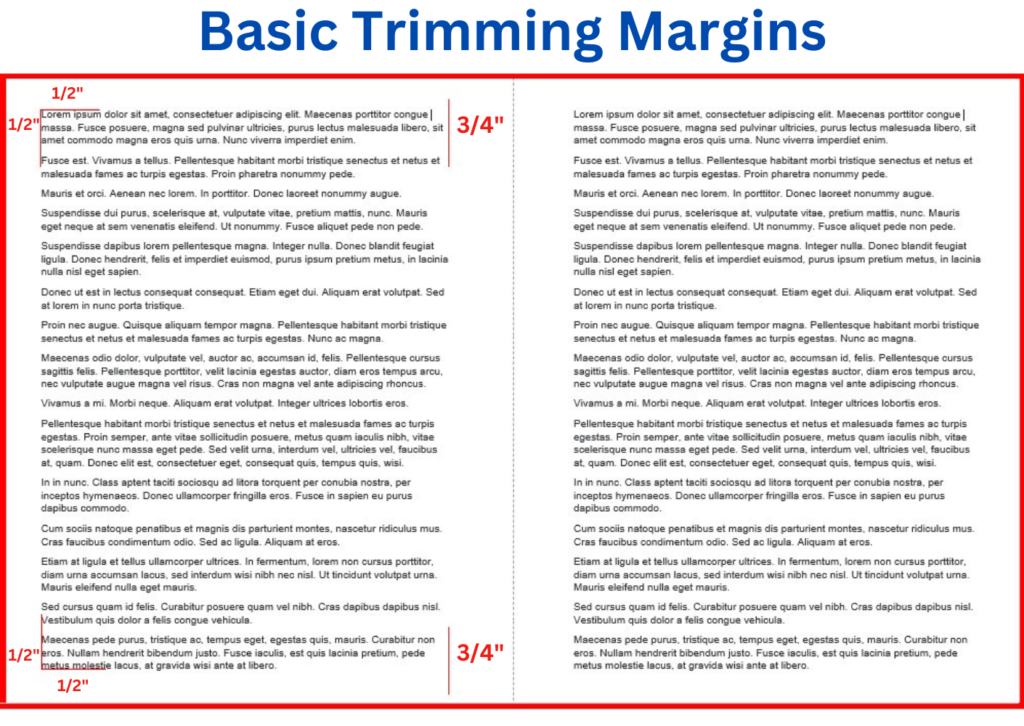
These measurements ensure that the trimming process does not cut off the text and that the book maintains a uniform appearance. Please note that these are standard measurements and may vary depending on the specific requirements of your book. Always check with your printer for their book margins specific guidelines.
5.3 What is Bleed?
The concept of bleed refers to the area of your design or page that extends beyond the trim edge of the book. This margin of error prevents important content from being cut off during the trimming process. The following depicts the bleed on book pages. The same principle applies to the bleed for the exterior cover design.
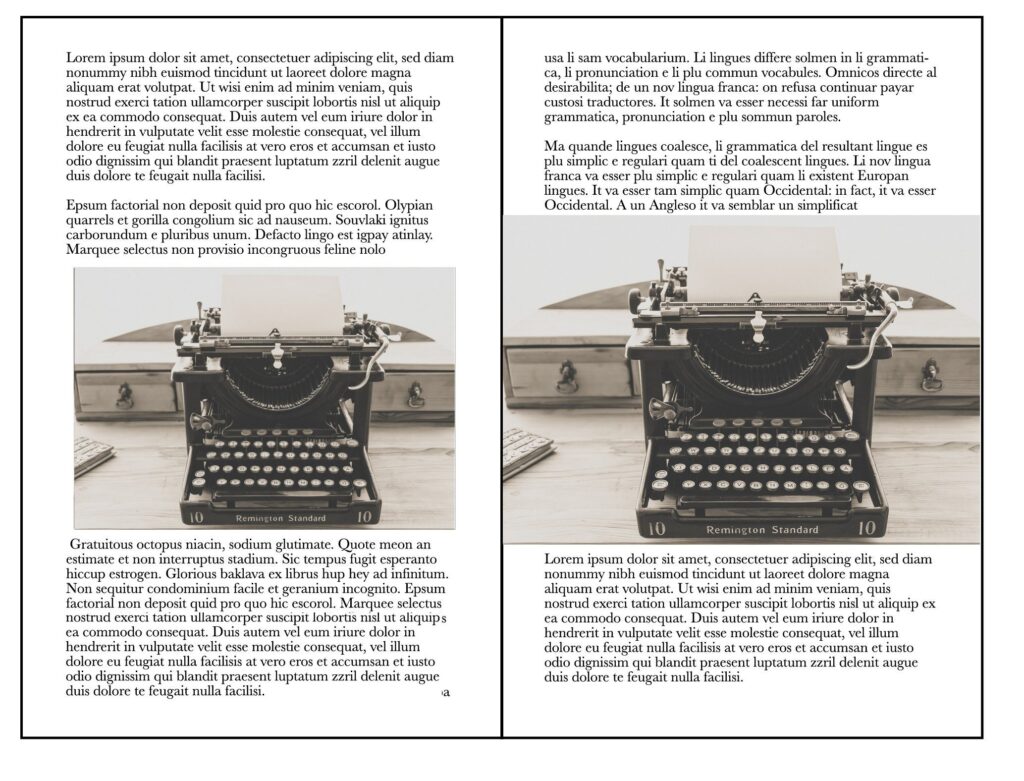
5.4 Spine Width
The width of the spine is calculated based on the number of pages in the book and the thickness of the paper. Moreover, this measurement is crucial for the design and printing process, as it determines how much space you have for text and other elements on the spine. Click the link to access the excellent Book Spine Calculator and to see how it can help you determine the width of your book spine.
5.5 Spine Position
Due to potential variances in the printing process and trimming, the exact position of the spine can slightly vary5. This is why it’s important to allow for a certain margin around your spine text and design elements to ensure they don’t get cut off or end up too close to the edge.
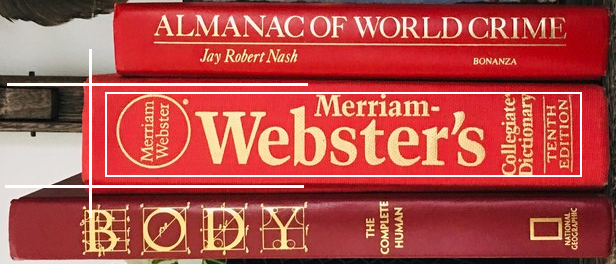
5.6 Spine Text
The text on the spine should be sized and centered properly to ensure it’s easily readable. Also, it’s important to allow for a bleed margin to prevent the text from being cut off during the trimming process.
Remember, the manufacturing process of book spines requires careful planning and precision. By understanding these steps, you can ensure that your book spine is not only functional but also aesthetically pleasing.
6. How to Design an Amazing Book Spine
A book spine is more than just a sliver of space on your bookshelf; it’s a marketing tool. A well-designed spine can make all the difference in drawing a reader’s eye in a crowded bookstore. The spine of a book is often the first thing a potential reader sees, especially when books are lined up on shelves. It’s crucial that your book spine stands out, yet remains clear and legible. This involves a careful selection of fonts, colors, and images that represent the essence of your book’s content and genre.
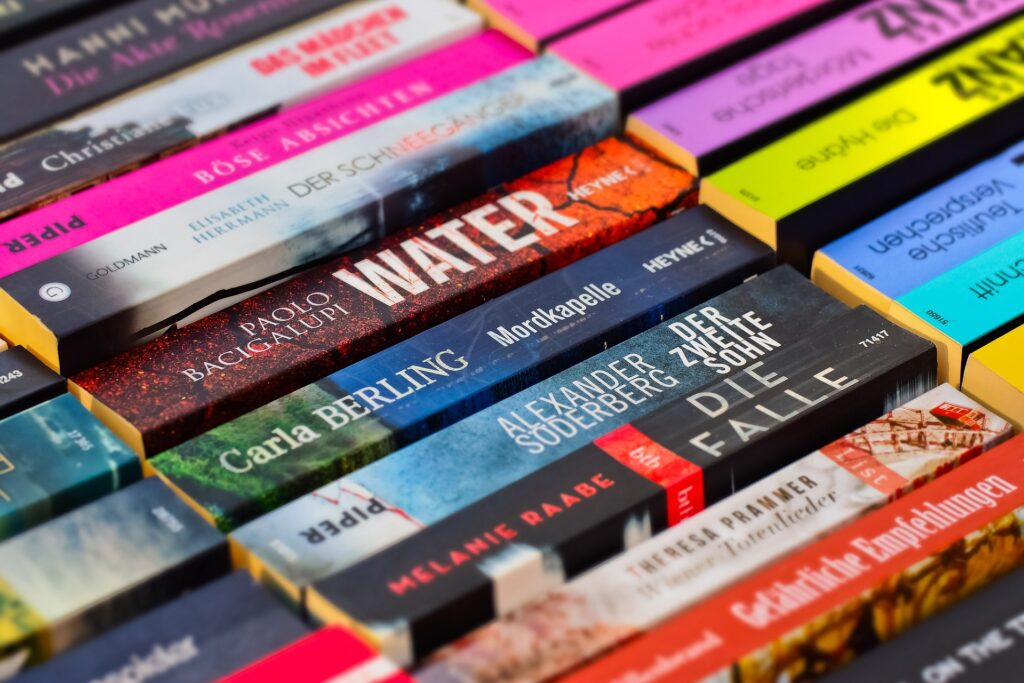
It should be cohesive with the book’s cover design, creating a seamless visual narrative. It must flow. Additionally, it’s important to consider the spine’s visibility and readability from a distance, as this can significantly influence a buyer’s decision. A well-executed spine design is not just aesthetically pleasing but also serves as a silent salesman, inviting readers to pull your book off the book display stand for a closer look.”
Here are some best practices and guidelines to design a spine that is not only functional but also irresistibly attractive.
6.1 Selecting the Spine Background
The book’s spine is a significant component of its overall design, often serving as a pivotal point of engagement for potential readers. In this section, we explore the intricacies of choosing the perfect spine background. Our focus is on three key elements: leveraging the psychology of color to evoke the right emotions, ensuring that the spine harmoniously aligns with the book’s cover and back designs, and emphasizing visibility to capture the attention of readers from a distance. Each of these aspects is crucial, working together to create a spine that is not only visually appealing but also communicates the book’s core themes and attracts readers’ interest.
6.1.1 Importance of Color Psychology
The choice of color for a book’s spine is not merely a matter of aesthetics; it’s a psychological gateway to the content within. Colors have the power to evoke emotions and set expectations. Red, for instance, can stir up excitement or a sense of danger, making it an excellent choice for thrillers or action novels. Pastel hues, with their soft and soothing appeal, are often perfect for romance or lighter reads. The psychology behind these color choices is profound. They create an instant, subconscious connection with potential readers, drawing them to a book that resonates with their current mood or desired reading experience. In children’s books, bright and vibrant colors can attract a younger audience, while more muted tones might appeal to readers looking for serious, contemplative literature. It is summed up very nicely in this Colours and Emotions Chart.

6.1.2 Coherence with Overall Design
The spine color should be more than just an isolated design element; it needs to be a part of a larger, harmonious whole. It should complement and enhance the front and back cover designs, creating a cohesive visual narrative that encapsulates the book. This unity in design aids in establishing a brand identity for the book or series. A well-coordinated color palette can make the spine stand out when placed amongst a sea of books on a shelf, while still maintaining a sense of belonging to its cover design. This coherence is especially crucial in a series, where the spine colors can form a distinct, recognizable pattern when placed side by side, aiding in brand recognition and series continuity.
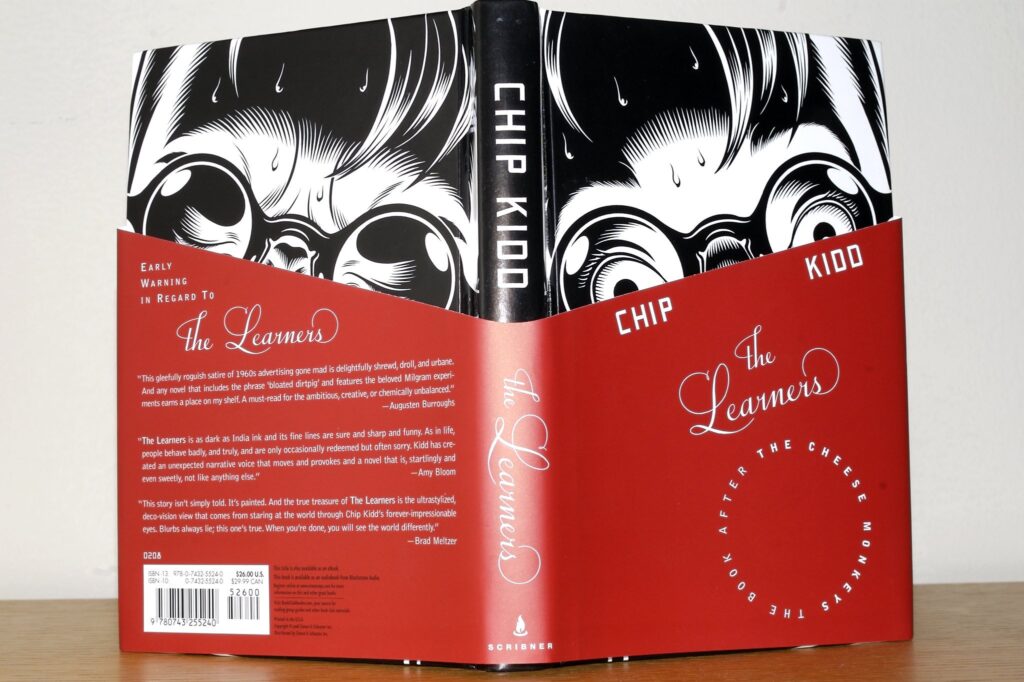
(Courtesy: karenhorton (flickr). (CC Licenses 2.0)
6.1.3 Visibility Factor
The visibility of a spine color in different lighting conditions is a critical aspect of bookshelf or book display stand appeal. In the diverse lighting environments of bookstores and libraries – from the bright, fluorescent lights of a retail space to the softer, more ambient lighting of a library – the spine must catch the eye of the passerby. Fluorescent or metallic colors can be particularly effective in this regard, offering a luminescence that draws attention.

The goal is to have a spine that stands out for its clarity and brightness, ensuring that the book doesn’t get lost in the crowded shelves but instead jumps out at the potential reader. This visual appeal can be the deciding factor in transforming a browser into a buyer.
6.2 Arranging the Spine Type
In this section, we delve into the intricate aspects of spine design, focusing on the interplay of typography and topography. The art of arranging text on a book spine involves not only selecting the right font but also understanding the nuances of text size, scaling, and its strategic positioning. We will explore four key areas: the impact of font selection, the crucial balance of size and scaling, the importance of precise text alignment and orientation, and the art of balancing these elements within the spine’s topography. Each aspect contributes significantly to creating a spine that is visually compelling and harmonious, ensuring the book makes a striking impression on the shelf.

6.2.1 Font Selection
In the world of book design, the choice of font on a spine can speak volumes. A well-chosen font captures the essence of the book’s genre and sets the tone before a page is even turned. For instance, a suspense thriller might feature a stark, bold font that hints at the drama within, while a romance novel might lean towards elegant, flowing scripts. But it’s not just about genre; it’s about personality. A playful children’s book might use a whimsical, rounded font, while a serious historical work might opt for something more traditional and staid.

Beyond the mainstream, there’s a realm of custom and unique fonts. These bespoke creations can give a book an edge of originality, making it stand out in a crowded marketplace. The process of designing a custom font can be as intricate and personal as the writing itself, imbuing the book with a unique fingerprint.
6.2.2 Spine Font Size and Scaling
The size of the font on a spine is a balancing act. It must be large enough to be legible from a distance – a critical factor in catching the eye of a potential reader browsing in a bookstore. Yet, it also needs to be proportionate to the spine’s width, especially for thinner volumes. The scale of the font can dramatically alter the book’s presence. Oversized lettering can be striking and bold, commanding attention, while smaller text might convey a sense of subtlety or sophistication.
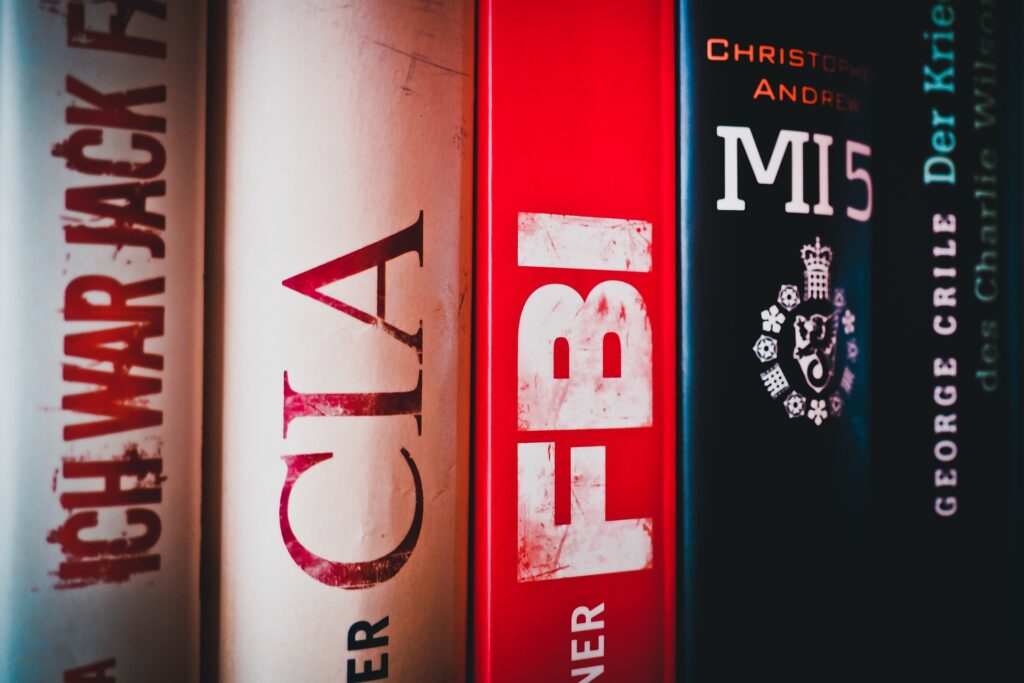
When scaling the font, consider the visual impact. A slightly larger font for the title can make it pop, while keeping the author’s name and other details in a smaller size can create a well-organized hierarchy of information.
6.2.3 Spine Text Positioning
The alignment and orientation of the text on a spine is crucial in the overall aesthetic of the book. The traditional vertical orientation has a classic appeal and works well for most genres. However, a horizontal orientation can be refreshing and modern, offering a unique visual twist.
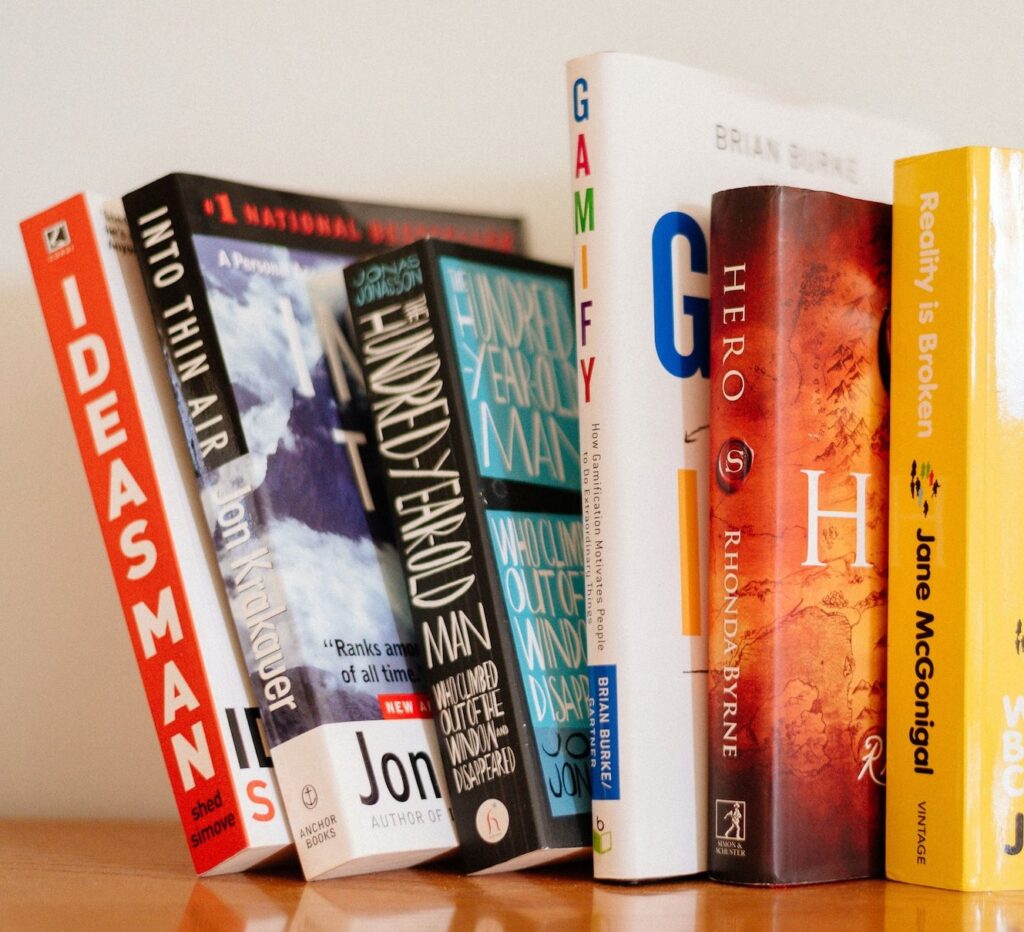
The alignment – whether centered, right-aligned, or left-aligned – should complement the book’s overall design theme. Additionally, the positioning of text creates a visual hierarchy. Typically, the book’s title takes the prime spot at the top, followed by the author’s name, and finally the publisher logo at the bottom. This order helps in guiding the reader’s eye in a natural flow.
6.2.4 Balancing Elements
A well-designed spine is a symphony of balanced elements. The principles of symmetry and asymmetry can be played with to create visual interest. A symmetric design exudes a sense of order and tradition, while asymmetry can lend a dynamic, modern feel.
When incorporating multiple elements on the spine, such as text, logos, or graphic elements, the key is harmony. The text should not be overshadowed by a large logo or an intricate graphic. Each element must have its space, contributing to the spine’s overall narrative without overwhelming it. This balance ensures that the spine is not only visually appealing but also effectively communicates the book’s essence at a glance.
6.3 Designing a Spine for a Book Series
Designing the spine for a book series is a delicate balancing act. It requires a keen eye for detail and a strategic approach to ensure each book’s spine is distinctive while harmoniously fitting into the series as a whole. This task is not just about aesthetic appeal; it’s about storytelling and brand building. The spines of a series are visual narratives that, when placed side by side, should tell a story of their own, reflecting the series’ journey and evolution.

In this section, we delve into the nuances of crafting spine designs that are individually captivating and collectively cohesive. From maintaining a consistent theme across the series to subtly differentiating each book, and ensuring seamless coherence with the book covers, this segment provides a comprehensive guide on how to design spines that make each book in the series a piece of a larger, beautiful puzzle. By mastering these key elements, designers can create a spine series that not only looks impressive on the shelf but also strengthens the series’ identity and enhances the overall reading experience.
6.3.1 Consistent Theme Across the Series
Consistency in spine design is crucial for series recognition. This can be achieved by maintaining a consistent color scheme, typography, and layout across all books. For example, using a similar color palette but varying shades or tones can differentiate each book while keeping the series visually connected. Consistency in font style and size across the series lends a professional and cohesive look. This uniformity makes the series easily recognizable on a shelf, appealing to both existing fans and new readers.
6.3.2 Series Numbering
Clearly displaying the book number on the spine is essential for series where the reading order matters. The numbering should be prominent but not overpowering. Consider creative ways to incorporate numbers, like integrating them into the design or using varying fonts or colors for differentiation. This not only aids in reader navigation but also adds a visual element to the spine design.
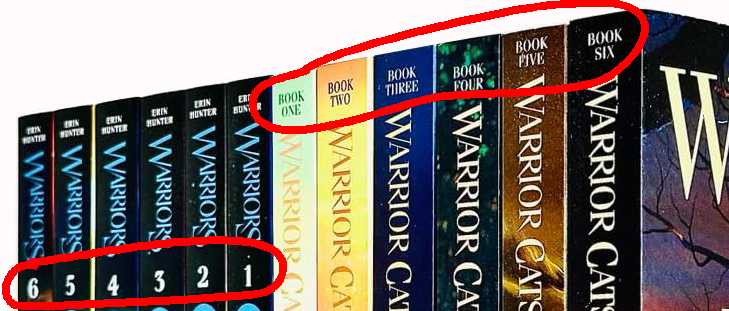
6.3.3 Differentiating Each Book
While maintaining a consistent theme, each book in the series should have its own identity. This can be achieved through variations in color, a unique image or symbol on the spine, or subtle changes in the design elements. For instance, a fantasy series might feature different mythical creatures on each spine, symbolizing the core theme of each book. These distinctions make each book appealing on its own while contributing to the series’ overall aesthetic.
6.3.4 Coherence with Front and Back Cover
The spine should not be an afterthought but an integral part of the book’s overall design. It should transition smoothly from the front to the back cover, creating a continuous visual story. This can be achieved by extending elements from the front and back cover onto the spine or by using complementary colors and styles. For example, a landscape scene on the cover can seamlessly wrap around the spine, or a graphic element from the cover can be echoed in the spine design. This coherence enhances the visual appeal of the book both as a standalone piece and as part of a series.
6.4 Creating a Unique and Attractive Spine Design
Designing a book spine that is both unique and attractive is an art. It’s about creating a design that not only catches the eye but also gives a glimpse into the soul of the book. The spine, though small, is a critical aspect of the book’s overall design. A well-designed spine can draw in readers, enticing them to pick up the book and explore its contents. It’s not just about aesthetics, though. The spine also serves a practical purpose, containing important information like the title, author’s name, and publisher logo. Balancing these functional requirements with a desire to create a visually appealing design can be challenging, but with careful planning and creativity, it’s possible to design a spine that is both beautiful and informative. Here are some key aspects to consider:
6.4.1 Visual Appeal
The visual appeal of a book spine can be enhanced through the use of contrasting colors, distinctive logos, and decorative elements. These elements should work together to create a spine that stands out on a bookshelf.
6.4.1.1 Contrasting Colors
In the realm of book design, the spine plays a crucial role as it is often the first aspect visible to potential readers on shelves. To make a lasting impression, designers leverage various elements such as contrasting colors, distinctive logos, decorative features, and unique materials, each contributing uniquely to the spine’s appeal. Starting with contrasting colors, we explore how this element is not merely about aesthetic pleasure but also about effective communication and emotional connection with the reader. Following this, we will delve into the significance of distinctive logos, the artistic touch provided by decorative elements, and the sensory impact of unique materials.
Purpose and Effect: Contrasting colors are essential in creating a visual impact. They help in distinguishing the book on shelves crowded with other titles. The right choice of colors can convey the book’s mood or genre even before the reader sees the cover.
Strategies for Implementation: Consider using complementary colors, which are opposite each other on the color wheel, for a striking effect. For instance, a bright red against a deep blue can create a sense of excitement and drama. Light colors on a dark background or vice versa can draw attention effectively.
Psychology of Colors: Different colors evoke different emotions. Yellow can suggest optimism, red can convey passion or danger, and blue might evoke calmness. Choosing colors that align with the book’s content can create an intuitive understanding of the book’s theme. Click here to access the Colours and Emotions Chart that was presented earlier in this blog post.
6.4.1.2 Distinctive Logos
Moving beyond the impact of contrasting colors, the next critical aspect of spine design is the incorporation of distinctive logos. Therefore, this segment is dedicated to exploring the power of branding through logos and symbols that resonate with the reader and reinforce the identity of the book or author. A well-crafted logo can be a game-changer in the competitive world of publishing, offering instant recognition and a visual anchor for the readers. Following this exploration of logos, we will venture into the realm of decorative elements, which add artistic flair and depth to the spine design, and then discuss the significance and sensory appeal of unique materials used in spine construction.
6.4.1.3 Importance of Branding
Logos serve as a branding tool. A well-designed logo on the spine can increase brand recognition for an author or a series. It’s especially important for authors with multiple works, as it helps in creating a consistent brand image across different books.
6.4.1.4 Design Considerations
The logo should be simple yet memorable, scalable to fit different sizes, and legible. It might be an abstract symbol, a stylized version of the author’s initials, or a graphic that represents a central theme of the book.

A great example of this is the logo used for the Harry Potter series by J.K. Rowling. The logo, which is often found on the spine of the books, features a distinctive typeface with lightning bolt detailing on the ‘P’ of Potter, making it instantly recognizable1. It’s simple, using only text, but it’s incredibly memorable due to its unique design.
It’s scalable, looking great on everything from the book spines to promotional materials and merchandise. The legibility of the logo is also excellent, with clear, bold letters that are easy to read even from a distance.
6.4.1.5 Case Studies
Think of iconic book series where the logo or font style has become synonymous with the series itself, making it recognizable even from a distance. One of the greatest examples of this is of course The Godfather by Mario Puzo: The cover design by S. Neil Fujita, with illustration by John Kashiwabara, is so iconic that you can find numerous T-shirts that copy its design6. The bold, stylized puppeteer’s hand holding the strings against a stark black background is instantly recognizable and has become synonymous with the series.

6.4.1.6 Decorative Elements and Unique Materials
Decorative elements such as patterns, textures, or embossing can add depth and interest to the spine design. These elements can be subtle or bold, depending on the overall design of the book.
Exploring the use of unique materials like cloth, leather, or metallic finishes can add a tactile dimension to the spine, making it not just visually appealing but also pleasant to hold.
6.4.2 Complexity and Simplicity
While intricate designs can be attractive, it’s important to remember that the spine is a narrow space and can become cluttered easily.
Balancing Design Elements: A simple, bold design can often be more effective than a complex one that is hard to decipher. The key is to strike a balance between complexity and simplicity. Too many elements can overwhelm the viewer, while too few may not convey enough about the book.
Legibility: Ensure that the title, author’s name, and any other text on the spine are legible. Even the most beautiful design can fail if the text is not readable.
Consistency: The spine design should be consistent with the front and back cover design. This creates a cohesive look and feel for the book.
Remember, the goal of a good spine design is not just to look good, but to effectively convey the essence of the book and attract the right readers. It’s an integral part of the book’s overall design and should be given careful consideration.

Sources:
- https://www.pen2publishing.com/book-spine/ ↩︎
- https://www.thebookdesigner.com/quick-look-fine-art-book-spine-design/. ↩︎
- https://miblart.com/blog/how-to-design-book-spine/ ↩︎
- Interior Margins for Standard Book Sizes – pagemaster.ca ↩︎
- https://blog.lulu.com/book-spine/ ↩︎
- The 25 Most Iconic Book Covers of All Time (bookriot.com) ↩︎
Mass Market Paperback Vs Paperback: What You Need To Know.
Table of Contents
1. Introduction
2. What Is A Paperback Book
2.1 Definition and Characteristics
2.2 Two Main Categories
2.3 History and Impact
3. What Is A Mass Market Paperback Book
3.1 Definition and Characteristics
3.2 Common Genres and Titles
3.3 History and Impact
4. Mass Market Paperback vs Paperback: Step-By-Step
4.1 Size
4.2 Price
4.3 Availability
4.4 Cover Material
4.5 Cover Art
4.6 Page Quality
4.7 Binding Methods
4.8 Durability
4.9 Portability
4.10 Typical Use
4.11 Target Audience
4.12 Legibility
4.13 Publication
4.14 Extra Content
4.15 Marketing
4.16 Disposability
5. Paperback VS Mass Market Paperback: A Comprehensive Comparison Table
6. In Conclusion
6.1 Buy a Standard Paperback When You’re:
6.2 Buy a Mass Market Paperback When You Have:
Sources:
1. Introduction
Mass Market Paperback Vs Paperback: What You Need To Know. In the vast universe of literature, the physical form of a book can greatly impact the reader’s experience. From the traditional hardcovers to the modern e-books, each format offers a unique reading journey. Amidst this diversity, paperbacks have consistently held their ground, offering a balance of affordability and quality. However, in the realm of paperbacks, readers often face a choice: should they choose mass market paperbacks or standard paperbacks?
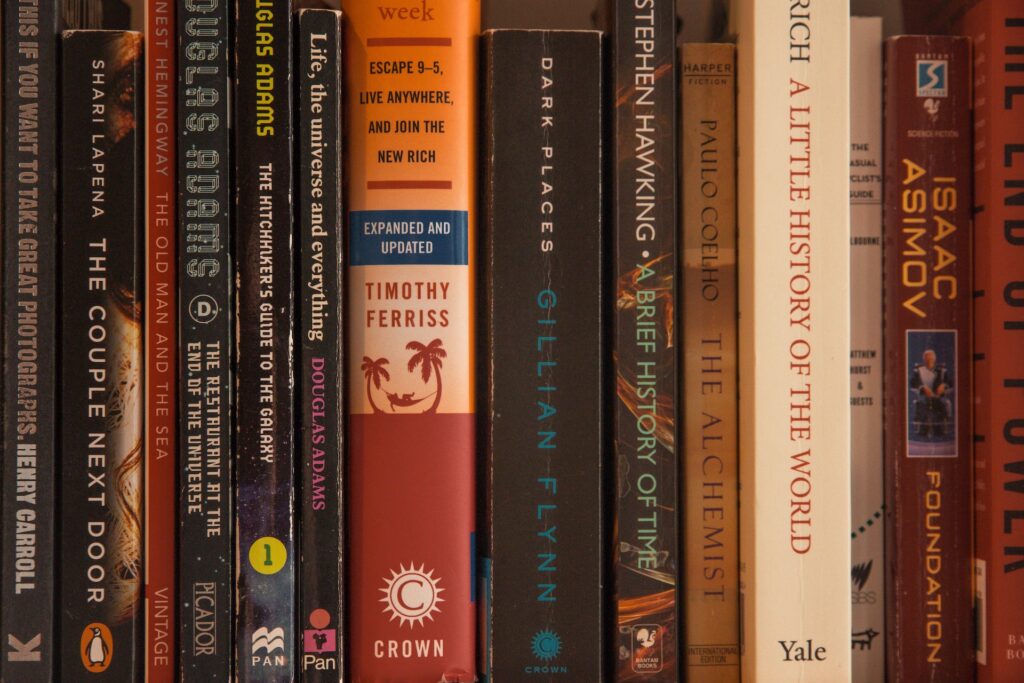
This guide aims to shed light on the distinctive characteristics of these two formats, providing valuable insights for both voracious readers and those who indulge in reading sporadically. It explores the subtle distinctions in actual dimension differences, material quality, cost, manufacturing, and distribution methods. It adresses the accessibility of both formats , and all other aspects that set apart a mass market paperback from a standard paperback. The findings will answer the question:
“Should I buy a massmarket paperback book or a paperback book?“
Whether you’re a bibliophile adding to your collection, a student seeking affordable textbooks, or an occasional reader looking for a convenient read, understanding these differences is crucial. It not only influences your purchase decisions but also enhances your overall reading experience. So, let’s embark on this enlightening journey to explore the world of paperbacks, and make your next reading adventure even more enjoyable.
2. What Is A Paperback Book
The market saw the introduction of the paperback (or softcover book) as a more affordable and portable alternative to hardcover books. What publishers wanted, was access to a greater market.

They wanted more people to be able to buy books. So what did they do? They incentivized the book market by creating paperbacks. These books that were less expensive to purchase, easier to carry and available in more locations as compared to hardcovers. In truth, paperback books have made a significant impact on the literary world since their introduction. They have revolutionized the book market. Paperbacks represents a significant portion in the publishing industry. Still to this day, their association with accessibility and convenience makes them a popular choice among a wide range of readers.
2.1 Definition and Characteristics
Paperback books feature soft, flexible covers made from thick paper or paperboard. They are generally less expensive to produce and purchase than hardcover books1. This makes them more accessible to a wider audience, converting book borrowers into buyers2.
The binding of the pages is also an important step in the process. Unlike hardcover books that often use stitches or staples, paperbacks typically employ a method known as “perfect binding”. This method securely glues the pages together at the spine, creating a strong bond that can withstand repeated handling.
They also have a characteristic size. Paperbacks are typically about 5.5 inches wide and 8.5 inches tall. When compared to hardcovers, their smaller size and lighter weight make them more convenient to carry around.
(Click the link to see the blog post that explains the difference between hardcovers and paperbacks: Hardcover VS Paperback: Which is the Better Choice?)
2.2 Two Main Categories
Paperbacks can be divided into two main categories. Firstly, standard paperbacks (or trade paperbacks) are typically larger and printed on better quality paper, lending them a more premium feel. Secondly, is mass market paperbacks which is a cheaper, mass appeal alternative to starndard paperbacks3.
2.3 History and Impact
They emerged as a popular format in the 20th century. This shift played a pivotal role in making literature and education more accessible to the general public. Paperbacks opened the doors to a world of reading for those who might have found the cost of hardcover books prohibitive. Their inexpensive nature also allows for easy transportation and sale in a variety of locations beyond just bookstores, further increasing their reach.
In addition, the surge in the number of university students globally in the 20th century led to the emergence of yet another type of paperback intended specifically for educational purposes. These educational paperbacks further contributed to making education more accessible.
The widespread availability and affordability of paperback books also had a cultural impact. They allowed for the dissemination of diverse ideas and stories, contributing to cultural exchange and understanding.
3. What Is A Mass Market Paperback Book
A mass market paperback book is a specific type of paperback that is smaller in size and generally more affordable than standard paperbacks. This format emerged as a response to the demand for inexpensive and easily accessible reading material.
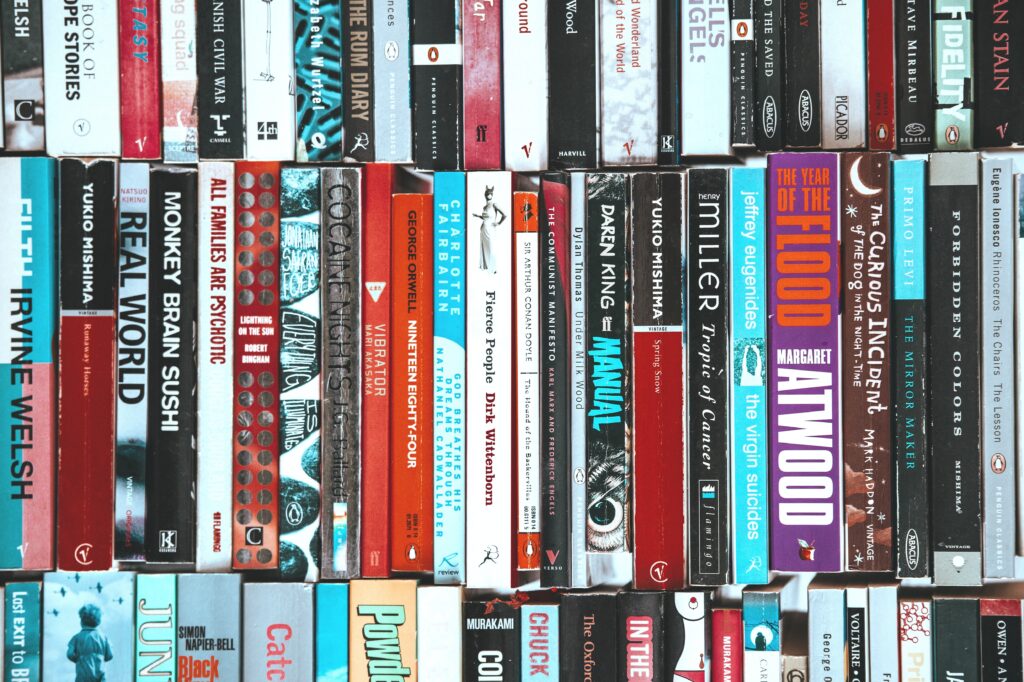
Manufacturers design mass market paperbacks to be a category of paperback books focusing on affordability and ease of transport. Designers specifically create them for mass market distribution. More than that of just standard paperbacks. Mass market paperbacks not only populate bookstores but also a variety of other retail spaces, making them highly accessible to the general public.
3.1 Definition and Characteristics
The key characteristic of a mass market paperback is its size. These books are usually about four inches wide and seven inches tall, making them compact and easy to handle. Their popularity significantly stems from portability, as their convenient size allows them to fit easily in a purse or pocket, making them ideal for reading on the go. The smaller size of mass market paperbacks enables their sale in non-traditional book-selling locations, thereby reaching a wider audience.
Another distinctive feature of mass market paperbacks is their low-quality paper and binding. Publishers print them on cheap, cost-efficient paper. This type of paper however discolors and deteriorates over time.They also have a simple binding that may not hold up well to frequent use. These factors contribute to their lower production and retail costs, but also to their shorter lifespan and lower resale value.
3.2 Common Genres and Titles
The affordability and widespread availability of mass market paperbacks have made them a popular choice for genre fiction, such as romance, mystery, thriller, and science fiction novels. Publishers particularly favor this format for bestsellers and novels because it appeals to a broader audience. The cover art and design of these books are often bold and eye-catching, designed to attract impulse buyers browsing through shelves or stands.
Some examples of well-known mass market paperbacks are:
- The Da Vinci Code by Dan Brown: A bestselling thriller that explores the secrets of Christianity and the Holy Grail.
- The Hunger Games by Suzanne Collins: A dystopian novel that follows a teenage girl who participates in a televised fight to the death.
- Fifty Shades of Grey by E.L. James: A controversial erotic romance that depicts the relationship between a young woman and a wealthy businessman.
- Two-Towers by J.R.R. Tolkien: A classic fantasy epic that chronicles the quest to destroy the One Ring and save Middle-earth.
- Catcher in The Rye by J.D. Salinger: A coming-of-age novel that captures the alienation and angst of a rebellious teenager.
3.3 History and Impact
Mass market paperbacks originated in the 1930s in the United States and the United Kingdom, as publishers sought to expand their market and reach new readers. The inspiration for mass market paperbacks came from the success of pulp magazines, which were cheap and widely distributed periodicals featuring sensational stories and illustrations. Mass market paperbacks adopted a similar format and content, but offered the advantage of being more durable and portable.
Mass market paperbacks had a significant impact on the publishing industry and the reading culture. They made books more affordable and accessible to the masses, especially during the Great Depression and World War II. This format also introduced new genres and authors to the public, and challenged the notions of literary quality and taste. They faced criticism and censorship for their perceived lowbrow and immoral content, but also gained recognition and appreciation for their cultural and artistic value.
4. Mass Market Paperback vs Paperback: Step-By-Step
In this section, we’re going going to examine the distinctive characteristics of these two formats. We are going to compare all the aspects, and distinctions that set apart a mass market paperback from a standard paperback.
4.1 Size
Paperbacks are larger than mass market paperbacks, usually measuring about around 5.5 inches wide to 8.5 inches tall and even 6 inches wide to 9 inches tall.. This size allows for more text per page and a more comfortable reading experience. However, it also makes them heavier and bulkier, which can be inconvenient for some readers who prefer portability.
Mass market paperbacks are smaller than standard paperbacks, typically measuring about 4 inches wide and 6.75 inches tall. This size makes them compact and easy to carry around, as they can fit in a purse or pocket. However, it also means that they have less text per page and a smaller font size. People often refer to them as ‘Pocket Sized’.
4.2 Price
Paperbacks are more expensive than mass market paperbacks. They usually cost between $10 and $20, depending on the publisher, the length, and the popularity of the book. The higher pricing of these books reflects their higher production costs and profit margins.
Mass market paperbacks are less expensive than standard paperbacks. They can cost anywhere from under $1 to $5 or $10, depending on the distrubutor, the publisher, the length, and the popularity of the book.4. Their lower pricing results from lower production costs and profit margins.
4.3 Availability
You can buy paperbacks from resellers, distributors, book dealers, and online outlets. They are primarily available in bookstores, and libraries. This is prmarily due to their higher quality and larger size. They are not widely distributed in non-traditional locations such as airports, drugstores, newsstands, and grocery stores.
Mass market paperbacks are widely available in non-traditional locations, such as airports, drugstores, newsstands, supermarkets and grocery stores. Primarily in high foot-traffic locations for maximum exposure. They are however, also found in traditional locations such as bookstores, libraries, and online outlets.
4.4 Cover Material
Paperbacks have a paper or paperboard cover, which is flexible and lightweight. Manufacturers make some covers from top-quality polyester, which offers more durability and resistance to water and stains. The printing is also of a higher quality. Moreover, the cover material can affect the appearance and feel of the book, as well as its protection from wear and tear.
Mass market paperbacks have the same cover material as paperbacks, which is paper or paperboard. However, they may have a lower quality of printing and finishing, which can make them look less appealing and more prone to damage. The cover material can also affect the readability and comfort of the book, as it can bend or curl easily.
4.5 Cover Art
Paperback books have covers that are often more sophisticated and targeted towards a specific audience. Designers also create them to reflect the genre and tone of the book. They often feature illustrations, photographs, or typography that convey the book’s theme and mood. Publishers usually print paperback covers on glossy or matte paper and may add special effects such as embossing or foil stamping.
Mass market paperbacks have covers that are more generic and standardized, aiming to appeal to a mass audience. Designers primarily create them to grab attention in retail settings. They often use stock images, simple fonts, and bright colors that indicate the book’s genre and category. Publishers usually print mass market paperback covers on low-quality paper, which may result in a lower resolution or faded appearance.
4.6 Page Quality
Paperbacks often use higher quality, acid-free paper. This type of paper is more durable and less prone to yellowing over time, making it a preferred choice for readers who value longevity and readability. The quality of the paper can also have special effects like a glossy or textured feel that can add a uniqueness to the reading experience.
Mass market paperbacks are typically printed on lower-quality wood-pulp paper which is often acidic affecting the durability and appearance of the book over time5. The acidic nature of the wood-pulp paper makes these books are more susceptible to deterioration. When exposed to light, heat, and humidity, the acidic paper undergoes a chemical reaction that causes it to weaken and become brittle. Additionally, the wood-pulp paper is prone to discoloration, particularly yellowing.
4.7 Binding Methods
Paperbacks are often constructed using a glue binding method, widely recognized as perfect binding. This binding technique involves aligning the pages of the book and then gluing them together at the spine with a strong, flexible adhesive. The result is a sleek and streamlined book spine that not only holds the pages securely but also provides an ideal surface for displaying the title and author’s name, a crucial aspect for visibility and recognition on bookshelves. This method also makes the book more prone to cracking or splitting if opened too wide or too often. This degradation can lead to pages becoming loose or, in extreme cases, falling out.
Mass market paperbacks also employ a glue binding method similar to that of standard paperbacks. However, the quality and strength of this binding in mass market editions are generally lower. The lower quality of glue used in these books often leads to a weaker bond between the pages and the spine. Over time, or with frequent use, this can result in pages becoming loose or even detaching completely from the book. The reduced adhesive strength also means that these books are less resistant to the wear and tear of regular handling, making them more susceptible to damage. Additionally, the spines of mass market paperbacks are often more prone to curving or wrinkling.
4.8 Durability
Paperbacks are known for their enhanced durability. This durability is largely attributed to the use of higher quality materials in their construction and more sophisticated binding methods, such as stronger adhesives and better-quality paper. These attributes ensure that paperbacks can endure regular use and handling, making them a reliable choice for frequent readers. The pages in paperbacks are firmly bound and less prone to falling out or becoming damaged over time, and the covers are crafted to resist tearing and significant wear, preserving the book’s aesthetic appeal. They are not immune to damage from external environmental factors. Moisture can lead to warping and staining of the pages. Heat and sunlight can cause the spine to weaken or the cover’s color to fade.
Mass market paperbacks also use a glue binding method, but of a lower quality and strength. The glue may not adhere well to the pages, resulting in loose or detached pages. The book spine may also be more curved or wrinkled, making the book less attractive and readable. Additionally, some mass market paperbacks may use a stapled binding method, which is even less durable and more likely to damage the pages. This not only affects the aesthetic appeal of the book, making it look worn and less attractive on a shelf, but it can also impact readability. A curved or wrinkled spine can make it difficult to keep the book open, potentially straining the binding further and exacerbating the problem.
4.9 Portability
Paperbacks are mostly portability. Designed to be both lightweight and compact, these books are ideally suited for easy transportation in a bag or backpack. They’re convenient, especially those who find themselves frequently on the move. They offer a hassle-free way to keep a book at hand. This portability also extends to the versatility of reading environments. Paperbacks can be effortlessly managed with one hand, making them a practical option for reading in tight spaces like crowded trains or waiting rooms. Their lighter weight reduces the strain on the reader’s hands and wrists, which is particularly beneficial during prolonged reading sessions. This ease of handling makes paperbacks a go-to choice for avid readers who like to incorporate reading into various parts of their day regardless of where they may be.
Mass market paperbackare are highly portable. Their smaller dimensions and lighter weight are central to this enhanced portability, making them exceptionally convenient for carrying around. The typical size of a mass market paperback allows it to fit easily into a variety of spaces like a backpack, a small handbag, or even a pocket. This compactness and light weight ensures that a reader can always have a book within reach, without it being a burden to carry. They can be held for extended periods without causing hand fatigue. This feature is particularly appreciated by readers who often find themselves in situations where they can read only with one hand, such as standing in a subway or holding onto a strap in a bus.
4.10 Typical Use
Paperbacks are commonly chosen for a wide range of literary works including non-fiction, and academic titles. This is primarily due to two charcteristics. Firstly, the fact that the better paper and binding quality of paperbacks make them well-suited for texts that are often read and referenced repeatedly. Academic texts need to withstand frequent handling, annotations, and page-turning without quickly deteriorating. Secondly, the clarity of print and the resilience of the pages contribute to their suitability for immersive reading sessions, where the reader might spend extended periods engaged with the text. The use of paperbacks can also extend to a variety of genres and subjects, encompassing everything from contemporary fiction to historical analyses, biographies, and self-help books as well.
Mass market paperbacks are predominantly utilized for genre fiction, such as romance, mystery, thriller, and science fiction. This specific usage aligns with the format’s unique attributes of affordability and portability, making them an ideal choice for a wide readership. Genre fiction, known for its entertainment value and broad appeal, finds a perfect match in the mass market paperback format. In the world of romance novels, the mass market format allows avid readers to collect numerous titles without a significant financial burden. The size and cost-effectiveness of these books enable readers to enjoy a variety of stories, from historical romances to contemporary love stories, conveniently and affordably. Similarly, for mystery and thriller enthusiasts, mass market paperbacks provide an accessible means to delve into suspenseful narratives and intricate plot twists
4.11 Target Audience
The target audience for paperback books includes regular readers, collectors, students, and professionals. Each group values different aspects of this format. Regular readers often prefer paperbacks for their balance of durability and ease of use. Their better quality endure hassale-free repeated handling, making paperbacks a dependable format. Collectors of books also gravitate towards paperbacks, especially editions with unique cover art, special prints, or those that are part of a series. For students, paperbacks offer a practical and cost-effective solution for academic materials such as textbooks and reference materials. Professionals consider them an ideal choice for reading during commutes, business trips, or in between meetings.
The target audience for mass market paperback books includes the general public, casual readers, and travelers. The general public often gravitates towards mass market paperbacks due to their affordability. The lower price point of these books makes them accessible to a wide range of readers, including those who might not typically spend much on books. Casual readers often seek these books primarily for entertainment and leisure, favoring genres like romance, mystery, thriller, and science fiction. Mass market paperbacks offer casual readers a vast selection of titles in these genres, often focusing on popular and engaging stories. Travelers apreciate their compact and lightweight nature. They see these books as an ideal choice for travel, as they take up minimal space and add little weight to luggage.
4.12 Legibility
Paperbacks are widely acclaimed for their legibility. This is due to their use of larger typeface and wider margins. These design choices create a more open and accessible layout, allowing the text to breathe and reducing the strain on the eyes. This is beneficial to readers who spend long hours reading, or for those who may have difficulty with smaller print. The larger typeface reduces the effort required to focus on each word. The ample margins provide a comfortable whitespace buffer, making it easier to track lines and turn pages without losing one’s place.The quality of paper used in paperbacks also contributes significantly to their legibility. Higher quality paper, often brighter and with a more opaque quality, offers better contrast between the text and the background.
The legibility of mass market paperbacks presents some challenges, primarily due to their smaller font size, reduced text per page, and tighter margins. These design choices can impact the ease of reading. The smaller font size means that more effort is required to discern each word and sentence, which can be particularly taxing for readers with visual impairments or those who are accustomed to larger print. Additionally, the condensed text and narrow margins lead to a more crowded page layout, which can make it harder to follow lines of text and quickly turn pages without losing one’s place. The quality of paper used in mass market paperbacks often worsens these legibility issues. Their lower quality paper can have a tendency to cause the ink to blur or fade over time. This degradation of the text’s clarity can be a significant hindrance to legibility, especially under less than ideal lighting conditions.
4.13 Publication
Paperback books are usually published one year after the initial release of the hardcover edition, serving as a more affordable and accessible version of popular titles. This sequence allows publishers to first capitalize on the higher profit margins of hardcovers before reaching a broader audience with the paperback release. It also keeps the title in the public eye for a longer period, potentially stimulating renewed interest upon the paperback’s release. Publishers use paperbacks for titles that have demonstrated commercial viability or are projected to perform well in the market. They can rejuvenate sales and attract new readers. Sometimes, a book is published directly in paperback format, bypassing the hardcover edition entirely. This is done with titles that are anticipated to have widespread appeal or for works by authors who have already established a strong reader base.
Mass market paperbacks are very appealing to self-publishers and emerging authors, especially in popular genres like romance, thriller, mystery, and general fiction. The lower production and distribution costs associated with this format make it an accessible and practical choice for new authors and smaller publishing houses looking to enter the market without a substantial financial investment. It allows them to test the waters with their target audience at a lower risk. If a mass market edition proves successful and garners a significant readership, publishers may consider releasing it in other formats to tap into different market segments. Depending on the situation, it may or may not be succeeded by a paperback or hardcover edition. Mass market paperbacks can also reach a broader audience, as the lower price point is more attractive to casual readers and book buyers.
4.14 Extra Content
Paperbacks may include additional content like interviews, illustrations, and author notes. This extra content can provide readers with a deeper understanding of the book and its context. For example, an interview with the author can reveal the inspiration behind the book, the challenges faced during the writing process, and the intended message or theme of the book. Illustrations can enhance the visual appeal of the book and help readers visualize the characters, settings, and events in the story. Author notes can provide personal insights, acknowledgments, and other relevant information that can enrich the reading experience.
Mass market paperbacks, on the other hand, are less likely to include extra content due to space constraints. The smaller size and lower cost of mass market paperbacks often limit the amount of extra content that can be included. As a result, these books typically focus on the main content of the story, with little to no additional content. However, this lack of extra content does not necessarily detract from the value of mass market paperbacks. Many readers appreciate the straightforward and accessible format of these books, which allows them to focus on the story without any distractions.
4.15 Marketing
Paperback books are marketed to appeal to book enthusiasts and to cater to specific genres like romance, mystery, suspense, thrillers and classics. Potential customes can be reached through book reviews and literary magazines, which are frequented by avid readers seeking new titles and recommendations. Online platforms and social media also play a significant marketing role. Publishers and authors often use websites, book blogs, and social media channels to reach a wider audience. These platforms allow for interactive engagement with readers, including book trailers, author interviews, and reader Q&A sessions, which help build anticipation and interest. The use of targeted ads and collaborations with influential book bloggers or booktubers can also be very effective. Word-of-mouth recommendations and the support of loyal fan bases are another crucial aspect of paperback marketing.
Mass market paperback books are specifically marketed to capture the attention of the general public and casual readers. This is done by using mass marketing techniques that maximize the visibility and appeal of these books to a wide audience. This includes the prominent placement of mass market books in various high-traffic retail location such as supermarkets, drugstores, airports, and train stations. It also includes the promotional technique of offering potential customers discounts, coupons, and giveaways. This makes the books financially attractive to cost-conscious readers. These tytpes of promotions are particularly effective in impulse-buy scenarios. This is where the lower price point can persuade a consumer to make an on-the-spot purchase. Additionally, the cover art and design of mass market paperbacks are carefully crafted to stand out in retail environments. Bright colors, bold and simple fonts, and eye-catching stock images are commonly used to quickly grab the attention of passersby.
4.16 Disposability
Paperback books are not considered to be very disposable because of their higher cost and quality. Compared to lessor formats, they have a higher perceived value. This perception is not just monetary; it extends to the quality of the material, the craftsmanship of the binding, and the clarity of the print. As a result, readers are more inclined to retain these books after reading them, viewing them as valuable additions to their personal libraries. Furthermore, standard paperbacks are frequently resold, a testament to their enduring quality and appeal. The resilience of their construction means they can maintain their condition through multiple reads and ownerships. Their durability makes them attractive in the second-hand market as well, where readers can purchase them for a fraction of the cost without significant compromise on quality.
Mass market paperbacks are seen as ‘read-and-discard’ books. Their lower price point makes them an attractive option for casual readers who are seeking entertainment without a significant financial investment. This affordability encourages a mindset where these books are viewed as less of a long-term commitment or valuable possession, and more as a convenient means of enjoying a story or passing the time. Consequently, once read, these books are often disposed of, or not given the same care and storage as more expensive editions. The lower quality of mass market paperbacks contributes to a reduced lifespan and their disposability. Once they become worn or damaged, there is little incentive to repair or preserve them, leading to a higher likelihood of them being discarded.
5. Paperback VS Mass Market Paperback: A Comprehensive Comparison Table
| Aspect | Paperback | Mass Market Paperback |
|---|---|---|
| Size | Larger, typically around 5.5 x 8.5 inches to 6 x 9 inches | Smaller and more compact, usually 4 x 6.75 inches “Pocket Sized”. |
| Price | Generally more expensive. | Less expensive, more affordable. |
| Availability | Commonly found in bookstores, libraries. Can be bought from resellers, distributors and book dealers (including online). | Usually found near the checkout lanes in drugstores, supermarkets, airports, convenience stores, etc. |
| Cover Material | Thick paper or paperboard, higher quality printing. | Thick paper or paperboard, but may have lower quality printing. |
| Cover Art | Often more sophisticated and targeted towards a specific audience. Possible special effects. | Typically more generic and designed to grab attention in retail settings. |
| Page Quality | Higher quality, often acid-free, less prone to yellowing. | Lower quality wood-pulp paper, more prone to yellowing and wear. |
| Binding Method | Usually glue binding, more robust. Prone to cracking or splitting. | Glue binding, but less durable. Book spine prone to curving or wrinkling. |
| Durability | More durable due to better materials and construction. | Less durable due to cheaper materials and construction. |
| Portability | Mostly portable usually in bags and backpacks. | Highly portable, easy to carry and read on the go. |
| Typical Use | Literary works, non-fiction, academic titles. | Genre fiction like romance, mystery, thriller, and science fiction. |
| Target Audience | Regular readers, collectors, students, and professionals. | General public, casual readers, travelers. |
| Legibility | Larger typeface and wider margins, easier on the eyes. | Smaller font size, less text per page, and tighter margins. Can strain the eyes of some readers. |
| Publication | Often published after the hardcover edition, but can aso be published without a preceding hardcover edition. | Some self-publishers and new authors of romance, thriller, mystery, and fiction books print their first works in this format. May or may not be succeeded by a paperback or hardcover edition. |
| Extra Content | May include additional content like interviews, illustrations, and author notes. | Less likely to include extra content due to space constraints. |
| Marketing | Targeted marketing towards book enthusiasts and specific genres. | Mass marketing strategies, often relying on high visibility in various retail locations. |
| Disposability | Less disposable due to higher cost and quality, often retained or resold. | More disposable due to lower cost and durability, often seen as ‘read-and-discard’. |
6. In Conclusion
Now that all the findings have been presented, we can answer the question of “Should I buy a massmarket paperback book or a paperback book?“.
Choosing between a standard paperback and a mass market paperback often depends on your specific wants, needs and preferences. This is my advice to you….
6.1 Buy a Standard Paperback When You’re:
- Prioritizing Quality: Opt for a standard paperback if you value higher-quality paper and stronger binding, ensuring durability and longevity.
- Seeking a Comfortable Read: If larger text and more spacious layout matter to you for ease of reading, standard paperbacks are the better choice.
- Looking for a Wide Range of Titles: Standard paperbacks often offer a more diverse selection, especially in genres like non-fiction and literary works.
- Collecting or Gifting: The aesthetic appeal and sturdier construction of standard paperbacks make them more suitable for book collections or as gifts.
6.2 Buy a Mass Market Paperback When You Have:
- Budget Considerations: Choose mass market paperbacks for a more affordable option.
- A Need for Portability: Their smaller size makes them convenient for travel or commuting.
- A Casual or Genre-Specific Reading Preference: These editions are ideal for casual reading, especially in popular genres like romance, mystery, or science fiction.
- Limited Space Solutions: If shelf space is a concern, the compact size of mass market paperbacks is advantageous.
Each format has its distinct advantages, so your choice should align with your specific reading preferences and circumstances.
In summary, opt for a standard paperback for a better-quality, more comfortable reading experience, especially if it’s a book you plan to keep or gift. Choose a mass market paperback for a more economical, portable option, particularly for casual or on-the-go reading. Your personal preferences and reading habits will be the best guide in making this choice.
Sources:
Hardcover VS Paperback: Which is the Better Choice?
Table of Contents:
1. Hardcover VS Paperback: Which is the Better Choice
2. The Difference Between Hardcover and Paperback
2.1 Defining Hardcover: What Does Hardcover Mean
2.1.1 Why People Buy Hardcover Books
2.2 Defining Paperback: What Does Paperback Mean
2.2.1 Why People Buy Paperback Books
2.3 How Are Books Made (Video)
3. Why You Should Properly Market Your Book
3.1 The Marketable Features of Hardcover Books
3.1.1 A Perceived Value and a Sense of Prestige
3.1.2 A Lasting Investment
3.1.3 The Visual Appeal
3.1.4 Up-Coming Author Signings, Book Tours and Events
3.1.5 The Retail Display Factor
3.1.6 The Reputation of Being “Gift Worthy”
3.1.7 Establishing Brand Identity
3.1.8 Higher Pricing Opportunities
3.2. The Marketable Features of Paperback Books
3.2.1 Affordable for Everyone
3.2.2 Widely Accessible by Everyone
3.2.3 Portable and Convenient
3.2.4 A Quicker Market Entry Process
3.2.5 Preferential Bookstore Placement
3.2.6 Sustainability and Eco-Friendly Appeal
3.2.7 The Anticipation of Possible Series and Sequels
3.2.8 Must Have Cover Variations
3.2.9 Mass Market Paperbacks
4. Hardcover In Terms of Functionality
4.1 Built-In Durability and Protection
4.2 Provides an Enhanced Reading Experience
4.3 Can be Gifted
4.4 Can be Personalized
4.5 Ease of Use Design
5. Paperback In Terms of Functionality
5.1 Lightweight and Compact
5.2 Easy to Handle
5.3 Storage Efficient
5.4 Annotation Friendly
5.5 Disposable
6. The Aesthetics of Hardcover Books
6.1 Cover Design
6.2 Dust Jacket
6.3 Endpapers
6.4 Book Block
6.5 Extras
7. The Aesthetics of Paperback Books
7.1 Cover Design
7.2 Book Block
7.3 Extras
8. The Pros and Cons of Hardcover Books
8.1 Hardcover Advantages
8.2 Hardcover Disadvantages
9. The Pros and Cons of paperback Books
9.1 Paperback Advantages
9.2 Paperback Disadvantages
10. Table: Pros and Cons of paperback Books
11. Hardcover VS Paperback: Which is the Better Choice?
12. Sources:
1. Hardcover VS Paperback: Which is the Better Choice?
Selecting a Hardcover VS Paperback format is a common problem for authors (or authors in the making). Which is better ? What format should I choose?
In truth, navigating the publishing world can be a complex task. Especially when it comes to choosing the right format for your book. As an author or a business, you want to make the best choice that aligns with your goals, resonates with your audience, and maximizes your profits.
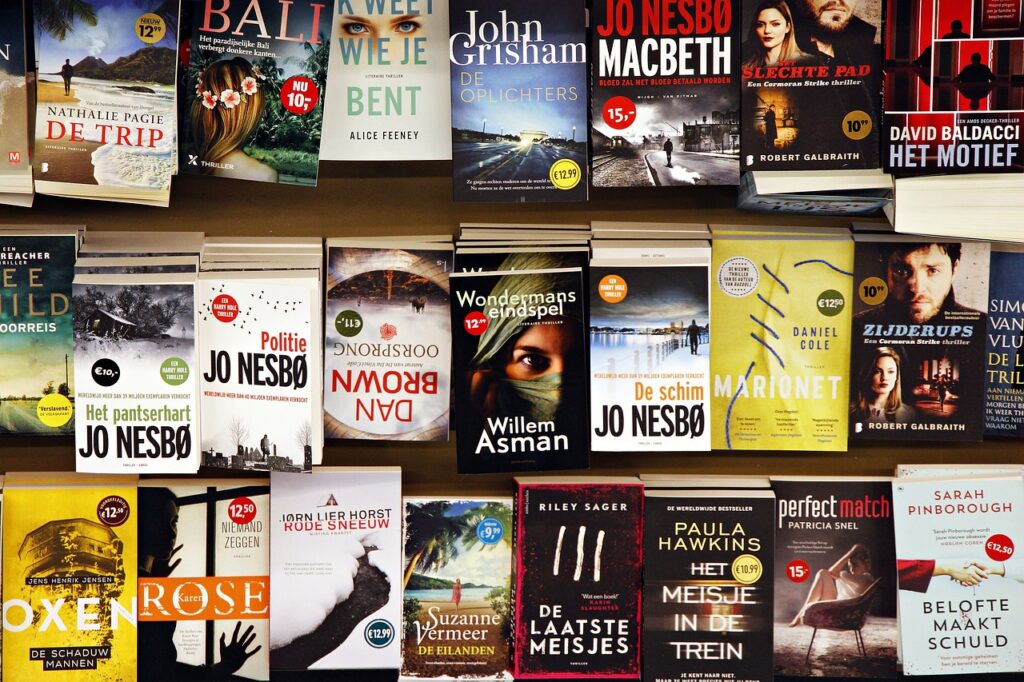
In this blog post, we’re going to tackle the age-old debate: Hardcover vs Paperback. Each format has its unique strengths and weaknesses, and understanding these can help you make an informed decision.
We’ll delve into the nitty-gritty of both formats, discussing aspects like marketing, functionality, aesthetics, and of the advantages and the disadvantages. We’ll delve deep into cost, quality, durability, and design. We’ll also explore how these factors can influence your book’s appeal to your target audience.
By the end of this post, you’ll have a comprehensive understanding of hardcovers and paperbacks, empowering you to choose the format that best suits your needs.
(Click the folowing link if you’re thinking about writing your first book, but aren’t sure how to go about it.)
“How to Write a Book With No Experience: Step by Step “
2. The Difference Between Hardcover and Paperback
Hardcover books are also known as hardbacks or hardbound books. They’ve have been around for centuries. These books come with rigid protective covers. Some say that their origins can be traced back to manuscripts that were bound by monks in the monasteries of the Middle Ages. The exact origin of hardcover books is difficult to trace, but they have been a part of human history for a long time.
On the other hand, paperback books have a more recent history. They’re known for their soft, thinner paper covers. The first paperbacks were published by a company called Tauchnitz1 in 1841. However, the modern paperback revolution didn’t start until the 1930s and 1940s. This revolution was well established by the early 1950s2. There after, many other companies started to produce well-printed, low-cost books on every possible subject, including a large range of first-class literature.
So, while hardcover books have a long and storied history, paperbacks are a relatively recent innovation that has significantly expanded the accessibility and affordability of books.
The following will explain the real differences between the two book types…
2.1 Defining Hardcover: What Does Hardcover Mean
Hardcover books are typically bound with rigid protective covers, made from binder’s board, cardboard or heavy paperboard covered with buckram or other cloth, heavy paper, or occasionally leather3. They have a flexible, sewn spine which allows the book to lie flat on a surface when opened. This sturdy construction gives hardcover books their characteristic durability and longevity.

“In the modern era, artistic dust jackets often protect hardcover books. However, a “jacketless” alternative has gained popularity in recent years. These “paper-over-board” or “jacketless” hardcover bindings forgo the dust jacket in favor of printing the cover design directly onto the board binding.
Despite the advent of paperbacks and e-books, hardcover books continue to hold a special place in the world of literature. They are often the format of choice for first editions and collector’s items, cherished by book lovers for their aesthetic appeal and physical presence on a bookshelf.
2.1.1 Why People Buy Hardcover Books
Here are the top five reasons why people may choose to buy hardcover books:
Durability: The sturdy binding and thick covers protect the pages inside, which means they are less likely to be damaged and can last for generations.
Aesthetics: Hardcovers often come with dust jackets and embossed designs that can be more visually appealing. They are considered more prestigious and can enhance the look of a bookshelf.
Collectability: For collectors, first editions and special releases are often available in hardcover. These editions can increase in value over time and are sought after by collectors for both personal enjoyment and potential investment.
Gift Giving: Hardcover books are often chosen for gifts because they have a more impressive presentation and convey a sense of value and permanence.
Earlier Release: New titles are typically released in hardcover before paperback. Readers who don’t want to wait for the paperback release will buy the hardcover to read the book sooner.
2.2 Defining Paperback: What Does Paperback Mean
A paperback book, distinct from its hardcover counterpart, is a specific type of book that is characterized by its cover which is usually made of thick paper or paperboard. This unique feature contributes to its lightweight nature and portability, making it a popular choice among avid readers.

The creation of a paperback book involves a tried-and-tested process. It begins with the printing of the inner pages, which are made of thinner quality paper. These pages are then precisely cut to the desired size, ensuring uniformity across all copies of the book.
The binding of the pages is an important step in the process. Unlike hardcover books that often use stitches or staples, paperbacks typically employ a method known as “perfect binding”. In this method, the pages are securely glued together at the spine, creating a strong bond that can withstand repeated handling.
The cover of the book, which is usually printed separately, is then attached. This cover not only protects the pages within but also serves as a visual representation of the book’s content, enticing potential readers.
One of the most significant aspects of paperback books is their affordability. The use of paper materials and the efficient binding process significantly reduce production costs, making these books more accessible to a wider audience.
In essence, a paperback book is more than just a collection of printed pages. It’s a well crafted product that combines functionality, portability, and affordability, making it a beloved format for readers around the world.
2.2.1 Why People Buy Paperback Books
Here are the top five reasons why people may choose to buy paperback books:
Ease of Transport: Due to their light weight, paperbacks are convenient to carry, making them an excellent choice for those who like to read on the go.
Cost-Effectiveness: Paperbacks are generally less expensive than hardcovers, which allows book lovers to purchase more books within their budget.
Reading Comfort: The flexible nature of paperbacks provides a cozy and intimate reading experience as they can be easily held and curled up with.
Compactness: Paperbacks are smaller in size, which means they occupy less space, whether in a bag for daily commute or on a bookshelf at home.
Variety and Timeliness: Paperbacks are available in a wide range of sizes and are typically released a year or more after the hardcover edition, offering readers more options and timeliness.
2.3 How Are Books Made (Video)
So far, we have defined both formats. We are now ready to go further into our discussion of hardcover vs paperback. Before doing so, you may want to watch the following video. It answers the question of How Are Books Made ? and can be extremely helpful in understanding the process.
3. Why You Should Properly Market Your Book
The goal of marketing a book involves various objectives, all designed to enhance the book’s presence in the marketplace. In truth, the effective marketing of your book can yield significant benefits that extend beyond the financial aspect. Here are the multifaceted benefits you can achieve:
Increased Visibility: Proper marketing campaigns help your book to stand out in an overcrowded market, ensuring it gains the visibility necessary to reach interested readers.
Audience Connection: Targeted marketing strategies can connect your book with readers who have specific interests, thereby increasing the likelihood of your book resonating with its intended audience.
Sales Growth: A well-executed marketing plan can lead to increased book sales, which are critical for recouping the investment made in the book’s publication and for generating profit.
Brand Development: Marketing helps in building and reinforcing the author’s brand, which is essential for career growth and the long-term success of subsequent works.
Market Positioning: Marketing can effectively position a book within its genre or category, highlighting its unique qualities and differentiating it from competitors
Sustained Interest: Continuous marketing efforts can keep a book in public consciousness long after its release date, leading to sustained interest and sales over time.
Reputation and Credibility: Marketing can help an author establish a reputation within the literary community, leading to increased credibility and opportunities for future projects.
Community Building: Authors can build a loyal fan base through marketing efforts, which is invaluable for word-of-mouth promotion and for creating a long-term readership.
Enhanced Opportunities: A successful book marketing campaign can open doors to new opportunities, such as speaking engagements, workshops, and adaptations into other media.
Personal Fulfillment: For many authors, the act of writing is also about sharing a story, message, or knowledge. Marketing ensures that these efforts reach and impact readers, fulfilling the author’s personal goals.
The following sections outline the elements you need to take into account when marketing both hardcover and paperback books. They detail how you should integrate the distinctive marketable features of each format into your marketing strategy.
3.1 The Marketable Features of Hardcover Books
Hardcover books hold a unique position in the literary world. In fact, they often carry a sense of prestige and importance that sets them apart from other formats. Here are the key marketable features of hardcover books that you need to consider and incorporate into your marketing campaign.
3.1.1 A Perceived Value and a Sense of Prestige
The very nature of hardcover books instills in them the notion of a perceived value and a sense of prestige. What’s more, we can be sub-divide this notion into two marketable categories:
Their Premium Appearance: Hardcover books inherently command a sense of perceived value and prestige, setting them apart in the literary world. Their robust bindings and quality paper exude a level of sophistication and endurance that often justifies their premium cost. When displayed, they not only speak to the content within but also to the owner’s commitment to a refined literary collection.
Their Collectible Appeal: This tangible heft and aesthetic allure position hardcover editions as prized possessions, often released before their paperback counterparts, making them the coveted choice for avid readers and collectors alike. The hardcover format’s association with longevity and collectibility further enhances its prestige, offering readers not just a book, but a lasting artifact to treasure and showcase.
3.1.2 A Lasting Investment
People consider hardcover books a lasting investment. Manufacturers make them with higher quality materials. This allows them to stand the test of time better than their paperback counterparts. You can market their durability and longevity as their:
Extended Lifespan: Avid readers and collectors alike often view hardcover books as a lasting investment, primarily due to their extended lifespan. Manufacturers design the sturdy construction and quality materials of hardcover books to endure the rigors of repeated handling, ensuring their good condition for years, if not decades.
Suitablility for Libraries: The durability of hardcover books makes them perfectly suitable for libraries. They can withstand extensive circulation and constant handling by readers. Libraries prioritize the acquisition of hardcover editions for this very reason. Hardcovers have proven themselves to be a cost-effective option in the long run. They resist spine damage, torn covers, and torn (or missing) pages.
3.1.3 The Visual Appeal
The visual appeal of hardcover books plays a significant role in their marketability. They often serve as a canvas for artistry and design innovation. An attractive cover design can catch the eye of a potential reader. Immediately drawing them in with compelling graphics, thoughtful color schemes, and a title that leaps off the shelf. Within this realm of aesthetic appeal, two main marketing points emerge:
An Attractive Cover Design: An attractive cover design serves as the book’s initial encounter with a potential reader. It’s a visual narrative that hints at the richness of the story or the depth of knowledge within. The cover imagery, typography, and color can instantly evoke curiosity. It can forge an emotional connection before the reader opens the book. This connection can captivate and stir the imagination. It can turn a browser into a buyer.
Embossing and Foil Stamping: The techniques of embossing and foil stamping add a luxurious dimension to the hardcover. Embossing creates a raised relief on the book cover, adding a layer of texture and depth. Foil stamping catches the light with its metallic sheen, giving the book a distinguished look that can signify elegance and high quality. These design elements enhance the beauty of hardcover books. They also contribute to their identity as premium products in the marketplace.
3.1.4 Up-Coming Author Signings, Book Tours and Events
The anticipation and excitement surrounding up-and-coming author signings, book tours, and events offer a powerful marketing thrust for hardcover books. These events provide readers with an exclusive opportunity to connect with the author. This deepens their engagement with the book and turns casual readers into loyal fans. These events also allow for the author to collaborations with other authors and industry professionals, yet again increasing their reach. The two standout marketing points here are as follows
Book Promotions: Book promotions like Author Signings, Book Tours and Events are a traditional promotional tactic for authors when launching a new book. They serve multiple purposes that help authors attract more readers and better establish themselves in the market. They allow authors to interact directly with their readers, fostering a personal connection that can lead to increased reader loyalty4. It can also increase the visibility of their work.
Networking: These events often involve interactions with various industry professionals such as publishers, literary agents, bookstore owners, and media personnel. These interactions can lead to opportunities for future collaborations, better distribution deals, and increased media coverage. Influencers, particularly those in the literary field, have a significant impact on their followers’ reading choices. Partnering with influencers can help an author reach a larger and more diverse audience5.
3.1.5 The Retail Display Factor
The retail display factor of hardcover books plays a crucial role in their marketability. It often tips the scales in favor of a purchase. The design of a hardcover’s spine and cover aims to catch the eye and promise worthy content within. It makes them stand out among the myriad of books vying for attention on the shelves. Suddenly, a book becomes a desirable object. Something that adds aesthetic value to any collection or space. Expanding on this, two vital main marketing points emerge:
Eye-Catching Shelf Presence: An eye-catching shelf presence is pivotal in the marketing of hardcover books. It’s like a silent persuasive salesman on the bookstore floor. It creates a visual impact that commands immediate attention. The critical design elements are bold colors that pop against the neutral backdrop of shelves, striking fonts that are legible and resonate with the book’s tone, and compelling imagery that tells a story at a glance. Together,these elements create an immediate, visceral reaction drawing readers in from across the room.
Front-of-Store Placement: The right visual appeal can get hardcover books “showcased”.They can secure the front-of-the-book-store placement. This coveted position in a bookstore ensures that the book is one of the first items a customer sees upon entering. It’s a form of endorsement, suggesting that the book is a noteworthy new release or a bestseller worthy of special attention. This prominent placement dramatically increases a book’s visibility. This can often lead to increased impulse purchases by customers drawn in by the book’s physical prominence and implied importance.
3.1.6 The Reputation of Being “Gift Worthy”
The reputation of hardcover books as “gift-worthy” holds a potent marketing angle. They’re ideal for consumers looking to make a meaningful impact with their purchase. Their sturdy construction and quality materials indicate that someone gave a higher level of investment, thought, and care during their selection. Their aesthetic appeal and designs makes them visually pleasing. They carry a sense of permanence and legacy because of thier durablility and endurance. The two main marketing points to focus on here are as follows:
Gift Giving: In the realm of book marketing, the appeal of hardcover books as gifts is a significant advantage. Their physical heft and quality materials suggest a substantial, thoughtful gift that honors the recipient. Durable binding, textured covers, and crisp printing all contribute to the sense that a hardcover book is an item of substancial worth. A gift of a hardcover book represents the offering of a tangible token of respect and consideration. To this day, they maintain a steady popularity in the gift market.
Special Occasions: Hardcover books hold a special place in the market as ideal items for commemorating significant occasions such as birthdays, graduations, and holidays. Their premium quality and presentation make them distinguished gifts that can mark these milestones with a touch of sophistication. They become treasured gifts that create a lasting bond between the occasion it commemorates and the giver’s thoughtful gesture. People display, share, and often pass down these books. The tradition of giving something meaningful and lasting on important occasions aligns perfectly with the tangible attributes of a hardcover. They have become the go-to choice for gift-givers aiming to celebrate life’s important moments.
3.1.7 Establishing Brand Identity
Establishing a brand identity can significantly elevate a publisher’s or author’s presence in the market. Initially, the tactile feel, weight, and visual appeal of a hardcover book make a strong, immediate impression. This sets the stage for a brand’s representation. Then, as readers engage with the book’s physical quality, they begin to associate these characteristics with the brand’s overall reputation for excellence and care. This association cements the publisher’s or author’s brand identity in the consumer’s mind, effectively differentiating their offerings from competitors. The two main marketing points are:
Brand Reputation: Establishing a brand reputation through the consistent offering of hardcover editions can be a cornerstone in a publisher’s brand identity strategy. By regularly producing hardcovers that showcase superior craftsmanship and aesthetic design, a publisher reinforces its commitment to quality and durability. This consistent quality becomes synonymous with the publisher’s brand, allowing readers to develop a sense of trust and expectation. Additionally, over time this trust can translate into brand loyalty. and commitment.
Author Branding: Authors who regularly release their works in hardcover can develop a strong personal brand that resonates with a loyal readership. The consistency of publishing in hardcover becomes a signature of their brand, suggesting quality and a premium reading experience. This can attract readers who appreciate the collectible and enduring nature of hardcovers and who are likely to become long-term fans. Additionally, hardcover releases can enhance an author’s reputation as a serious and respected writer, influencing reader loyalty and book choice.
3.1.8 Higher Pricing Opportunities
Hardcover books present a unique opportunity for higher pricing strategies, reflecting their added value in the marketplace. These editions typically command a premium due to their durability, aesthetic qualities, and collectability. Publishers and authors can set higher price points. They can justify them with the tangible and intangible benefits that a hardcover book provides. This higher pricing aligns with customer expectations that a hardcover will offer a superior reading experience. Building on this foundation, we can pinpoint two main marketing points:
Premium Pricing: The premium pricing strategy allows publishers to set higher retail prices that reflect the superior quality and added value of the product. This approach can significantly boost profit margins. The perceived value of hardcovers often justifies the increased cost to consumers. People see hardcover books as a luxury item. With their robust construction and often exclusive content, publishers can attract discerning readers who are willing to pay a premium for the benefits that come with owning a deluxe edition. This increases the revenue per unit sold. It also enhances the book’s brand as a prestigious and desirable item.This further solidifies the book’s place in the premium segment of the market.
Limited Editions: Limited Editions of hardcover books offer exclusive features that regular editions do not. Things like autographs, unique cover art, or special forewords by notable figures. These attributes heighten the book’s desirability, making it not just a reading copy but a collector’s item. Publishers can set premium prices for these limited editions. They can tap into the collector’s market where buyers are prepared to invest in items that hold potential to appreciate in value. This strategy elevates the perceived value and status of the book. It also creates a sense of urgency among collectors and enthusiasts to purchase before the limited run sells out.
3.2. The Marketable Features of Paperback Books
Paperback or softcover books have made a significant impact on the literary world since their introduction. Publishers brought them into the market as a more affordable and portable alternative to hardcover books. Their association with accessibility and convenience makes them a popular choice among a wide range of readers. Here are the key marketable features of paperback books that you need to consider and incorporate into your marketing campaign:
3.2.1 Affordable for Everyone
Paperback books first emerged as an new alternative to hardcovers. They soon revolutionized the entire publishing industry. Their production featured lighter paper and flexible covers which allowed for lower retail prices. This made them affordable for everyone. Today, this affordability extends far beyond the confines bookstores, and into various retail channels. Paperbacks are available practically everywhere. They have become the go-to choice for readers looking for both value and variety. These books are within easy reach of everyone. The two main marketing points of this section are:
Cost-Effectivness: The cost-effectiveness of paperback books is one of their most appealing features. Their production involves the use of less expensive materials and simpler binding techniques compared to hardcover books. This lower manufacturing cost translates into a lower retail price for the consumer. Readers can enjoy a wide range of titles at a fraction of the cost of hardcovers. This cost-effectiveness extends beyond individual readers. Libraries and educational institutions can also expand their collections more affordably with paperbacks
Mass Market Appeal: . The lower retail prices of paperbacks contributes significantly to their popularity and mass market appeal. Their affordability makes them accessible to a wide range of readers, including students, casual readers, and those with budget constraints. Genre diversity also plays a major role. The availability of a multitude of genres caters to a broad spectrum of reader interests. Whether it’s romance, mystery, suspense, thrillers, or classics, there’s a paperback book for every reader6. They appeal to the market masses.
3.2.2 Widely Accessible by Everyone
An extensive network of distribution channels facilitates the widespread distribution of paperback books. These channels encompass large-scale book retailers. Both brick-and-mortar and online, which often feature vast collections of paperback titles due to their popularity. Today, online platforms have also broadened the reach of paperbacks. They provide instant access to a global market with the convenience of home delivery. These various channels ensure the presence of paperbacks in any place where there’s an opportunity to sell or borrow reading material. This makes them widely accessible to everyone. Drawing on this, two vital main marketing points emerge:
Readily Available: Paperback are readily available in a variety of locations. They are available in Large-Scale Book Retailers. These include both physical stores and online platforms, which often feature vast collections of paperback titles. You can find them in General Retail Stores. Stores like supermarkets and airport kiosks commonly stock paperbacks, reaching consumers during their routine shopping trips or while traveling. Educational Institutions and Libraries also stock paperbacks, circulating them frequently among readers of all ages as a staple item. They are of course readily available on Online Platforms as well. Here, they have broadened the reach of paperbacks, providing instant access to a global market with the convenience of home delivery.
Broadly Distributed: Various global markets broadly distribute paperback books. The United States controls over 24.7% of all global book sales, followed by China, which accounts for 19.4%, and Germany with 9.2%. As of 2023, the top 5 biggest book markets control 66.71% of all global book sales.7 IngramSpark, a self-publishing service, provides global book distribution, including access to over 40,000 independent bookstores and online stores. They have print locations in the United States, United Kingdom, and Australia, and also take advantage of their Global Connect® Program. It which includes digital printers in countries like Brazil, China, Germany, India, Italy, Japan, Poland, South Korea, and Spain8.
3.2.3 Portable and Convenient
People have long celebrated paperback books for their ease of use and accessibility, making them a favored choice for readers on the go. Their simple yet durable design is tailor-made for the bustling lifestyle of modern book lovers, offering a perfect blend of practicality and comfort. Unlike their hardback counterparts, one can easily transport paperbacks. This allows literature enthusiasts to enjoy their favorite novels, biographies, or poetry collections wherever they may find themselves. The two main marketing points are:
Lightweight and Compact: The lightweight and compact nature of paperback books contributes significantly to their popularity. Paperbacks easy to carry, whether in a bag or just in hand, enhancing their portability. The compact size of paperbacks also adds to their appeal. They are typically smaller in size than hardcovers, making them convenient for travel and on-the-go reading. Whether you’re commuting, traveling, or simply prefer to have a book with you for leisure reading, the lightweight and compact nature of paperbacks makes them an excellent choice.
Flexible and Durable: Flexibility and durability gives paperback books their appealing “ease of use” feature. This primarily refers to the physical comfort and convenience they offer to readers. The soft cover of the book allows for bending or folding back on itself, making it easier to hold with one hand. This is particularly useful when reading in limited space situations, such as on public transportation or while standing in a queue. Their flexible spin contribute to their ease of use. By contrast, hardcover books, which tend to remain rigidly open. A paperback’s flexible spine allows for easily laying flat or holding open at any page. You requires less effort to keep the book open at the desired page. This reduces hand strain. It also make it more comfortable to read for extended periods.
3.2.4 A Quicker Market Entry Process
Paperback books typically enjoy a quicker market entry process compared to hardcovers. This is due to several logistical and production factors. The manufacturing of paperbacks is more streamlined and less resource-intensive. They require less material and time to produce. This allows publishers to capitalize on current trends, reader interests, and timely topics with agility. It also allows them to keep the book offerings fresh and relevant, aligning with consumer demand and increasing the potential for sales. Their are two clear-cut marketing advantages here. Thet are as follows:
Rapid Publishing: The rapid publishing of paperback books is a highly efficient process that leverages technological advancements. It begins with the editing and typesetting of a manuscript, followed by layout design according to the book’s dimensions. Moreover, high-speed digital presses swiftly print these pages in large quantities. The printed sheets undergo cutting, collation, and perfect binding to the spine. Typically, publishers produce the cover designs quickly and print them in bulk, keeping them simpler in design. Despite the fast pace of production, integrated quality control measures maintain high-quality levels. They then pack and ship the finished books. Their lighter weight and less bulky profiles allow for more efficient handling and transportation.
Agile Publishing Strategy: Since a softcover book can be produced and brought to market more quickly than a hardcover, publishers can capitalize on current trends, reader interests, and timely topics with agility. This responsiveness allows them to keep the book offerings fresh and relevant, aligning with consumer demand and increasing the potential for sales. The ability to publish rapidly also enables publishers to test the market with less risk and potentially adjust future print runs based on early performance indicators. This rapid-to-market strategy can be particularly beneficial for new authors or for books in genres that experience sudden spikes in popularity, ensuring that content is available when and where readers are most receptive.
3.2.5 Preferential Bookstore Placement
A huge marketing advantage of paperback books is preferential bookstore placement. The strategic positioning of paperback books in a bookstore to maximize their visibility and appeal to customers. Retailers often place paperbacks in prominent locations, such as the front of the store, near the cash register, or on special display stands. The reason for this is twofold. Firstly, paperback books are generally more affordable than hardcovers, making them a popular choice for many readers. Secondly, they can be display in large quantities. Publishers may also pay for preferential placement to promote certain titles. Preferential Bookstore Placement can significantly boost sales and exposure for the book. The two main marketing points here are:
Shelf Space Efficiency: Bookstores often favor paperback books due to their shelf space efficiency. In truth, the smaller size of paperback books allows for displaying more titles within the same amount of space compared to hardcover books. This not only maximizes the use of valuable retail space, but also provides customers with a wider variety of choices. Additionally, the uniformity in size of paperbacks creates a neat and organized appearance on the shelves, which can enhance the overall shopping experience for customers.
Endcap and Checkout Displays: Endcap displays are located at the end of aisles. Checkout displays are found near the cash register. These are prime locations for paperback book placement. These areas are highly visible to customers as they browse or prepare to make their purchase. Placing paperback books in these areas can attract impulse buyers or those looking for a quick, affordable read. Furthermore, the compact size of paperbacks makes them ideal for these displays, as they can be stacked or arranged in a variety of ways to catch the customer’s eye.
3.2.6 Sustainability and Eco-Friendly Appeal
Paperback books have a sustainability and eco-conscious allure. This is due to their lightweight nature. They simply require less energy to transport. From from the publisher to the bookstore, and then from the bookstore to the reader’s home. This results in a lower carbon footprint for each book sold. Additionally, the production process for paperbacks is less resource-intensive. They require fewer materials and less energy to produce. This makes paperbacks a more sustainable greener choice for environmentally conscious readers and publishers. The two marketable categories are as follows:
Recyclable Materials: Paper is the primary material used in the production of paperback books. It is of course is a renewable resource. This paper can be sourced from responsibly managed forests. In other words, where trees are replanted to replace those that are harvested. Thankfully, many publishers are increasingly using recycled paper. This in turn further reduces the demand for new raw materials. This conserves natural resources. It also reduces the amount of waste that ends up in landfills. Paperback books at the end of their lives are often recycled into new paper products. This creates a closed-loop system that minimizes waste and promotes sustainability. It helps to preserve our forests, reduce waste, and promote a more sustainable publishing industry.
Reduced Environmental Impact: Another benefit of making paperback books is reduced environmental impact. Unlike hardcovers, paperback books use less paper, ink, glue, and other materials in their production. This means they use less energy and water. They also emit less greenhouse gases and pollutants. According to a study by the Book Industry Environmental Council, paperback books have a 30% lower carbon footprint than hardcover books9. So then, when readers and publishers choose a paperback book, they help reduce the impact on the environment. They help the fight against climate change.
3.2.7 The Anticipation of Possible Series and Sequels
Using the anticipation of possible series and sequels is a marketing strategy that can increase the sales and popularity of paperback books. This strategy involves creating a story that is ongoing, leaving the readers eager to find out what happens next. By doing so, the publisher can create a loyal fan base that will await the continuation of the story. Moreover, the publisher can also generate more revenue by releasing the books in different formats, such as hardcover, e-book, or audiobook, at different times. This can create a sense of urgency and exclusivity among the readers. Another approach is to re-publish and revive older out of print titles along side new titles. Building on this strategy, we can pinpoint two main marketing points:
Ideal for Series: Paperbacks are ideal for book series. Their nature is encouraging to readers who want to collect multiple volumes. They are inexpensive, light, and portable making them more accessible and convenient for readers who want to follow a long-running story. Their uniform size and design creates a consistent and appealing look on the bookshelf. Moreover, paperbacks can be released in different editions, such as mass market, trade, or premium, to cater to different preferences and budgets of readers. Some of the most popular and successful book series in paperback are The Lord of the Rings, Harry Potter, The Hunger Games, The Chronicles of Narnia, and A Song of Ice and Fire.
Backlist Promotion: This is a savvy marketing approach where publishers reissue previous works, perhaps those that have slipped out of circulation or dimmed in the public eye, in paperback form. This strategy can spark renewed interest in an author’s oeuvre, particularly timely if there’s a new release on the horizon or if the author has recently stepped into the spotlight. It’s also an effective way to draw in new readers to an author’s earlier works, thereby broadening their readership and boosting book sales. Moreover, this approach leverages the benefits associated with paperbacks, including affordability, extensive distribution networks, and a more pronounced presence in bookstores. Notable successes of this strategy include the resurgence of titles like Margaret Atwood’s “The Handmaid’s Tale,” J.D. Salinger’s “The Catcher in the Rye,” and Harper Lee’s “To Kill a Mockingbird.”
3.2.8 Must Have Cover Variations
Must have cover variations is a marketing tool that involves creating different covers for the same paperback book to appeal to different audiences, markets, or occasions. This can increase the sales and popularity of the book by attracting more attention, generating more word-of-mouth, and offering more choices to the readers. A book may have a different cover for different countries, regions, languages, or cultures, to reflect the local preferences and sensibilities. Or, a book may have a different cover for different editions, such as mass market, trade, or premium, to differentiate the quality and price. Moreover, a book may have a different cover for different seasons, holidays, or events, to create a sense of timeliness and relevance. Like The Girl on the Train by Paula Hawkins, The Da Vinci Code by Dan Brown, and The Hunger Games by Suzanne Collins. The two marketing points are as follows:
Collectible Covers: Collectible covers are a marketing tool that involves creating limited edition or special edition covers for paperback books that are designed to appeal to collectors, fans, or enthusiasts. These covers may feature exclusive artwork, illustrations, photographs, or designs that are different from the regular covers. They may have foil, embossing, holograms, or signatures. Their purpose is to create a sense of rarity, uniqueness, and value for the book. To encourage readers to buy multiple copies or editions of the same book. Collectible covers can also generate more buzz and publicity for the book, as they may attract more attention from the media, reviewers, or influencers. Harry Potter and the Philosopher’s Stone by J.K. Rowling, which has 20 different covers for its 20th anniversary edition.
Tie-in Marketing: Tie-in marketing is a marketing tool that involves creating paperback books that are related to or based on other media products, such as movies, TV shows, video games, or comics. Its purpose is to leverage the popularity and fan base of the original media product, and to create a cross-promotional effect that can boost the sales and exposure of both the book and the media product. Tie-in marketing can also provide additional content, backstory, or perspective for the fans of the original media product, enhancing their enjoyment and engagement. The Hunger Games by Suzanne Collins, has been adapted into a movie series and a video game.
3.2.9 Mass Market Paperbacks
Mass market paperbacks are a category of paperback books crafted for affordability and ease of transport. They are intended for mass market distribution. These editions are characteristically more compact, slim, and lightweight compared to their paperback counterparts. They focus on functional print quality and binding that align with their economical pricing. Typically found in bustling, high-traffic areas, these books are conveniently priced to fit most budgets, generally ranging from $5 to $10. Pocket editions are also recognized for predominantly showcasing particular literary genres.
Widely Distributed: Mass market paperbacks are widely distributed far beyond traditional bookstores. Many supermarkets have a section dedicated to books, often including a range of mass market paperbacks. It’s very common to find a small selection of these popular types of books in drugstores. Another prime example is airports. Travelers often pick up a book for their journey. You’ll find mass market paperbacks in many airport shops. Newsstands are typically located in high-traffic areas. They also carry these books. Online Retailers like Amazon and eBay also sell new and used mass market paperbacks.
Popular for Genre Fiction: Mass market softcover books are a staple for popular genre fiction like thrillers, romance, and science fiction. These genres have a large and dedicated reader base. The high demand makes it profitable for publishers to produce mass market paperbacks, which are cheaper and more portable than hardcover editions. Romance and thrillers often have fast-paced release schedules. Authors in these genres may publish multiple books a year. These types of paperbacks allow publishers to print and distribute these books quickly and economically. Sci-fi and fantasy genres often involve series. Mass market paperbacks are an affordable way for readers to keep up with lengthy series without a significant financial investment. Impulse purchases and collectability also factor into the eqution.
(Click this link to visit the blog post that explains the relationship between Mass Market Paperbacks and Paperbacks: Mass Market Paperback Vs Paperback: What You Need To Know.)
4. Hardcover In Terms of Functionality
Hardcover books, also known as hardback or hardbound books, have been a staple in the publishing industry for centuries. They offer a range of functionalities that contribute to their enduring popularity among readers and collectors alike. Let’s explore some of these features:
4.1 Built-In Durability and Protection
Hardcover books are synonymous with resilience. Publishers use thick cardboard, cloth, or leather materials to create them. These covers act as a shield against the rigors of handling. They are particularly resistant to the wear and tear of travel. This makes them reliable companions for those who carry their books on the go. Additionally, the spine is usually stitched and glued. This is a technique that ensures the pages remain secure and intact over years of use. For those who see books as investments or heirlooms, hardcovers are the edition of choice due to this inherent longevity.
4.2 Provides an Enhanced Reading Experience
There’s an unmistakable allure to cracking open a hardcover book. The substantial feel of a hardback gives a sense of occasion to each reading session. There is a satisfying feeling to both the story and the act of reading itself. The quality of paper used in hardcovers is often superior. It offers a better visual and tactile experience. There is less bleed-through of ink and a firmer page turn. For many, this culminates in a deeper level of immersion and a richer reading experience. It can transform a simple book into a treasured journey.
4.3 Can be Gifted
A hardcover book is more than a present. It’s a statement. Its an impressive presentation. From the artful cover to the heft that it brings to one’s palms. Hardcovers communicate esteem and consideration. Additionally, the variety of designs—from minimalist to ornate—allows for a more personalized selection that can align with the recipient’s tastes and interests. The durability also implies that your gift will endure, providing a lasting reminder of the occasion and the thought put into choosing it.
4.4 Can be Personalized
The potential for personalization in hardcover books extends their functionality into the realm of the sentimental. The inclusion of a dedicated space for inscriptions means that these books can capture a moment in time. A connection between giver and receiver or a personal milestone. For authors and fans alike, the hardcover’s endpapers or title page offer a canvas for signatures and dedications. It can enhance the book’s value as a collectible and personalized artifact.
4.5 Ease of Use Design
The reader’s comfort is paramount in the design of a hardcover book. They tend to lay flat when opened, facilitating hands-free reading. However, their structural integrity also allows for better spine visibility on bookshelves, aiding in quick identification and selection. The design often includes built-in bookmarks such as ribbons. This adds to the user-friendly nature of the hardcover. The thoughtfulness in design extends to the choice of typeface and paper quality. Both are typically geared towards creating an effortless and engaging reading experience.
5. Paperback In Terms of Functionality
In the vibrant tapestry of book formats, paperbacks are particularly celebrated for their blend of practicality and accessibility. Each aspect of their design has been honed to serve readers who value both convenience and the tactile experience of reading. Let’s delve deeper into the functional features that make paperbacks an enduring choice for bibliophiles everywhere:
5.1 Lightweight and Compact
The portability of paperback books is unmatched. Designed to be easily transportable, they are the perfect travel companion for the avid reader. The reduced weight and size mean that these books can be tucked into a side pocket or a small nook in a backpack, causing little to no burden. This compactness is a thoughtful consideration for those who like to have a book at hand. Always ready to transform idle moments into immersive journeys without the hassle of carrying a bulky item.
5.2 Easy to Handle
Handling a paperback is a breeze. Their flexible nature allows readers to flip pages with ease, bend back the cover, and enjoy a comfortable reading posture without the need for a flat surface. They are perfect for those who enjoy reading in bed, on a crowded train, or while standing in line. Paperbacks offer a level of convenience that hardcovers simply cannot match. The soft cover and light binding of a paperback are designed to be gripped in one hand, making the reading process as effortless as possible.
5.3 Storage Efficient
In urban living spaces where every inch counts, the paperback is a boon. Its modest footprint allows for a greater number of books to be stored in a tight space. Whether it’s a compact nightstand shelf or a towering bookcase, paperbacks fill the shelves without demanding the real estate that hardcovers do. This space efficiency also extends to libraries and bookstores where the ability to offer a wider selection in a finite space is invaluable.
5.4 Annotation Friendly
Paperbacks are a favorite among those who interact with their reading material beyond mere consumption. The ease with which one can underline passages, jot down thoughts in the margins, and dog-ear pages for future reference makes the paperback a dynamic tool for engagement. This is particularly beneficial for students or book club members who wish to discuss and reference specific parts of the text. It’s also great for readers who view books as living documents that bear witness to their intellectual journey.
5.5 Disposable
The disposable nature of paperbacks is not a comment on their content but rather a reflection of their physical life cycle. Given their more affordable cost and wide availability, paperbacks can be seen as less of a lifelong commitment and more of a consumable good. They can be read and relinquished without the guilt of parting with a costly artifact. This disposability is also a nod to the sustainability efforts in reading culture. Many paperbacks are printed on recycled paper and can be recycled again, contributing to a circular economy in the literary world.
6. The Aesthetics of Hardcover Books
Hardcover books stand as much for their beauty as they do for their strength and protective capabilities. The aesthetic elements that embellish hardcover books are as carefully crafted as the stories within them. These features not only enhance the reading experience but also transform the book into an object of desire and a piece of decor. Let’s explore the artistry that contributes to the allure of hardcover books:
6.1 Cover Designs
The cover of a hardcover book acts as the reader’s first physical point of contact and sets the stage for the narrative inside. Designers may employ a variety of techniques. Anything from intricate embossing to the use of foil stamping to create a tactile and visual feast. The materials chosen for the cover can be a fine cloth, a richly textured paper, or a supple leather. All geared to adding depth and character to the book. These materials are often selected not only for their durability but also for their ability to convey a certain mood or complement the book’s theme. This makes the hardcover both a collector’s item and a statement piece.
6.2 Dust Jacket
The dust jacket a hardcover book is an opportunity for designers to marry form with function. This protective sleeve often bears elaborate designs, reflecting the essence of the book through imaginative illustrations or photography. Beyond aesthetics, the dust jacket frequently includes critical reviews, author biographies, and a synopsis that can intrigue a potential reader. It serves as a protective skin for the book but also as a marketing tool, designed to entice and inform.
6.3 Endpapers
Endpapers or Endsheets are the unsung heroes of a book’s design, offering a hidden surprise as one opens a hardcover. These sheets, which are thicker than the book’s interior pages, might be colored, patterned, or adorned with maps and illustrations relevant to the book’s content. They provide a seamless transition from the cover to the text. Their design can be an echo of the book’s theme. An additional canvas for the artist, or a space for the owner to inscribe personal notes, adding to the book’s sentiment and uniqueness.
6.4 Book Block
Within the hardcover’s sturdy exterior lies the book block—where the soul of the book resides. The choice of paper within the book block affects not just the visual appeal but also the tactile sensation of reading. Premium papers offer a pleasing brightness and opacity, ensuring that each page turn is a smooth and inviting gesture. The paper’s weight and texture are selected to complement the print, allowing for crisp, legible text and vivid reproductions of photographs or artwork, making the act of reading both a visual delight and a physical pleasure.
6.5 Extras
The inclusion of thoughtful extras can transform a hardcover book from a reading material into a treasured keepsake. A satin ribbon bookmark, affixed to the spine, provides convenience while hinting at the luxurious nature of the book. The edges of the pages may be gilded, catching the light with a golden or silver sheen that evokes the grandeur of antiquarian volumes. For the discerning collector, a slipcase provides not only protection but an additional aesthetic dimension, often echoing the design of the book cover. Suggesting a home for the book that is both elegant and protective.
7. The Aesthetics of Paperback Books
Paperback books may be more widely recognized for their practicality and affordability, but they also possess a distinct aesthetic charm. This charm is a result of thoughtful design choices that appeal to both the visual senses and the tactile experiences of readers. Here’s a closer look at the aesthetic elements that make paperbacks special:
7.1 Cover Designs
The cover of a paperback book often serves as the visual hook that draws readers in. What’s more, designers leverage vibrant colors, engaging imagery, and innovative typography. This is done to create a striking front piece that encapsulates the narrative’s essence or the mood of the content. Hardcovers rely on texture and materials to impress. Paperbacks often use their cover art as the main feature. Finishes rang from high-gloss to tactile matte, providing varied sensory feedback upon touch. These covers are not merely protective; they’re an invitation to the story that lies within.
7.2 Book Block
The book block—comprising all the book’s pages—is the heart of the paperback’s functionality and aesthetics. The choice of paper impacts both the durability of the book and the comfort of the reader. High-quality, acid-free papers resist yellowing over time and provide a smooth, inviting surface for the printed word. The layout and typography within the book block are crafted with an eye for readability. They balance white space with text to create an uncluttered and engaging page that invites readers to continue turning. The thoughtful selection of fonts and meticulous attention to margin widths contribute significantly to the book’s overall aesthetic and ease of reading.
7.3 Extras
The appeal of a paperback book can be significantly enhanced by thoughtful additional features. French flaps bring a touch of elegance and practicality. They offer an extended cover that folds inward. This extended cover provides a built-in bookmark and extra space for supplementary information about the book or author. French flaps are often adorned with additional artwork or thematic designs. Deckled edges, with their hand-cut feel, offer a tactile, old-world charm to the paperback. This is reminiscent of a time when all books were crafted by hand. These features are not standard for all paperbacks. They signal a dedication to creating a product that transcends mere function. Their aim is to delight the senses and enhance the joy of reading.
8. The Pros and Cons of Hardcover Books
Hardcovers have been a staple in the publishing industry for centuries. They offer a range of functionalities that contribute to their enduring popularity among readers and collectors alike. However, like any other format, they come with their own set of advantages and disadvantages. Let us examine both…
8.1 Hardcover Advantages
Durability and Longevity: Hardcovers are crafted with superior materials, endowing them with a resilience that allows them to be passed down through generations. Moreover, their robust construction makes them resistant to the common damages of frequent use.
Aesthetics and Prestige: With their visually stunning covers, including dust jackets and embossed details, these volumes carry an aesthetic allure. They hold a place of prestige in the literary world, particularly sought after in first editions and special prints.
Ideal for Gifting and Celebratory Occasions: Their impressive presentation, exuding value and permanence, makes them perfect for gifting. They serve as meaningful mementos for milestones like birthdays and graduations.
Enhancing Brand Reputation and Identity: These books are a testament to the publisher’s and author’s commitment to quality and a superior reading experience. They appeal to devoted readers and collectors who value the elegance and consistency of these editions.
Opportunity for Higher Pricing: The added value and unique features of hardcovers justify a higher price point. Limited editions, often featuring exclusive content, further enhance their worth, leading to increased profit margins and heightened perceived value.
8.2 Hardcover Disadvantages
Higher production costs: Hardbound books are more expensive to produce than paperbacks, requiring more materials and resources. This can reduce the profit margins and the affordability of the book.
Lower sales volume: They tend to have lower sales volume than paperbacks, due to their higher retail prices and lower availability. In addition, they are also less likely to be purchased by casual readers or impulse buyers.
Portability and convenience: These types of books are heavier and bulkier than paperbacks, making them less convenient to carry and store. They are also less comfortable to read for long periods, requiring more effort to hold and keep open.
Environmental impact: Hardcover books have a higher environmental impact than paperbacks, consuming more paper, energy, and water. They also generate more waste and emissions during production and transportation.
9. The Pros and Cons of Paperback Books
Paperback books offer a unique set of advantages and challenges. These lightweight, affordable editions have revolutionized reading habits and book distribution. They have made literature accessible to a broader audience. However, they also come with certain limitations that affect their durability and market presence. In this exploration, we will delve into the various facets of paperbacks. We’ll weigh their benefits against their drawbacks to understand their role in the ever-evolving landscape of publishing.
9.1 Paperback Advantages
Affordability and Accessibility: Paperbacks are cheaper and more widely available than hardcovers, making them more appealing to budget-conscious and casual readers. They can be found in various retail channels, both online and offline, reaching a large and diverse audience.
Portability and Convenience: These books are lighter and smaller than hardcovers, making them easier to carry and store. Without a doubt, they are ideal for readers who like to read on the go, whether traveling, commuting, or relaxing. In addition to that, they also offer a comfortable reading experience, as they can be bent or folded to suit the reader’s preference.
Variety and Timeliness: Softcovers in general offer a wide range of genres and topics to suit different reader interests and tastes. They are also typically released a year or more after the hardcover edition, giving readers more options and timeliness. Some readers may prefer to wait for the paperback release to enjoy a lower price, a different cover design, or additional content.
Sustainability and Eco-Friendliness: Paperbacks are more environmentally friendly than hardcovers, as they use less paper and resources in their production. They also generate less waste and carbon footprint in their transportation and disposal. Readers who are conscious of their environmental impact may choose paperbacks over hardcovers for these reasons.
9.2 Paperback Disadvantages
Durability and Longevity: Paperbacks are more prone to damage and wear and tear as they have thinner covers and pages that can easily tear, crease, or fade. They are less likely to withstand frequent handling and circulation, which can affect their readability and appearance. They are also more susceptible to environmental factors, such as moisture, heat, and sunlight, which can cause them to warp or discolor.
Aesthetics and Prestige: In general, softcovers are often considered less attractive and prestigious than hardcovers, as they have simpler and less durable covers and bindings. They may lack some of the design elements that hardcovers have, such as dust jackets, embossing, or foil stamping. They are also less impressive and valuable as gifts or collectibles, as they do not convey the same sense of quality and importance.
Market Competition and Saturation: These types of books face more competition and saturation in the market as they are more widely produced and distributed. They have to compete with other paperbacks, as well as e-books and audiobooks, which offer similar or lower prices and convenience. They also have to deal with the possibility of piracy and illegal downloads, which can reduce their sales and revenue.
Delayed Release and Availability: Typically, paperbacks are released later than hardcovers, which can affect their marketability and relevance. Readers who want to read the latest titles or join the current discussions may not want to wait for the paperback release. They may opt for the hardcover edition or other formats instead. Some titles may also not be available in paperback at all, or only in limited editions or regions, which can limit the access and choice of readers.
10. Table: Pros and Cons of Hardcover and Paperback Books
Here is a table listing the Pros and Cons for each Element. Hardcover vs Paperback books:
| Element | Pros | Cons |
|---|---|---|
| Accessibility | Paperback | Hardcover |
| Aesthetics | Hardcover | Paperback |
| Affordability | Paperback | Hardcover |
| Availability | Paperback | Hardcover |
| Book Release | Hardcover | Paperback |
| Brand Reputation | Hardcover | Paperback |
| Convenience | Paperback | Hardcover |
| Durability | Hardcover | Paperback |
| Eco-Friendliness | Paperback | Hardcover |
| Environmental Impact | Paperback | Hardcover |
| Gifting | Hardcover | Paperback |
| Identity | Hardcover | Paperback |
| Higher Price Justification | Hardcover | Paperback |
| Longevity | Hardcover | Paperback |
| Market Competition | Hardcover | Paperback |
| Portability | Paperback | Hardcover |
| Prestige: | Hardcover | Paperback |
| Production costs | Paperback | Hardcover |
| Saturation | Hardcover | Paperback |
| Sales volume | Paperback | Hardcover |
| Sustainability | Paperback | Hardcover |
| Timeliness | Paperback | Hardcover |
| Variety | Paperback | Hardcover |
11. Hardcover VS Paperback: Which is the Better Choice?
The question of whether to publish a book as a hardcover or a paperback depends on several factors. Factors like: your goals as an author, the size of your budget, who your target audience is, and the genre your writing in. There is no definitive answer, but here are some general elements to consider:
- Hardcover books are more durable, prestigious, and collectible. They can also generate higher profits per unit sold and enhance the author’s reputation. However, they are also more expensive, bulky, and rigid, which may deter some readers. They also require more time and resources to produce and distribute, which may delay the book’s release date and limit its availability.
- Paperback books are more affordable, portable, and convenient. They can also reach a wider and more diverse audience and benefit from a quicker market entry process. However, they are also less durable, less aesthetic, and less valuable. They may also face more competition and lower profit margins per unit sold, which may affect the author’s income and brand.
Ultimately, the choice between paperback vs hardcover depends on your personal preference and what you hope to achieve with your book. You may also consider publishing in both formats, either simultaneously or sequentially, to maximize your exposure and sales potential.
12. Sources:
- https://www.encyclopedia.com/history/culture-magazines/paperback-books ↩︎
- https://www.britannica.com/topic/publishing/The-paperback-revolution ↩︎
- https://en.wikipedia.org/wiki/Hardcover ↩︎
- Virtual Book Tours: 14 Must-See Strategies from Authors (bookbub.com) ↩︎
- The Vital Role of Social Media in Tourism Marketing (rezdy.com) ↩︎
- The Difference Between Paperback vs. Mass Market Paperback (julesbuono.com) ↩︎
- wordsrated.com ↩︎
- Ingramspark.com ↩︎
- https://www.booknetcanada.ca/blog/2021/11/15/the-book-industry-and-the-environment ↩︎
How To Find Books In a Library
Introduction
“How to find books in a library” is a phrase that might evoke images of ancient halls and the musky scent of wisdom bound in leather. In today’s digital world, the library remains a temple of learning, but the process of finding a book has evolved. So, let’s embark on a delightful expedition to uncover the secrets of the library. Imagine a young student stepping into the vast silence of the local library, eyes wide with anticipation. This student, like many of us, seeks a path through the forest of shelves and the sea of titles. Together, we’ll map out this journey.

Understanding the Dewey Decimal System
Firstly, understanding the Dewey Decimal System is crucial. It’s not just a numerical sequence, but a reflection of the world’s knowledge in miniature. In truth, each of the ten main classes covers a broad discipline, with numbers that can pinpoint the exact topic you need. For instance, a wanderlust-filled traveler looking for tales of far-off lands will find solace among the 900s. This is the geography and history section. Here, they might discover a traveler’s account of adventures in the Himalayas. It may be nestled between a hefty atlas and a historical treatise on Rome. Here the code is 915.4 – the number that signifies travel in Asia.
Navigating the Library Catalog
Secondly, understand that navigating the library catalog is an essential skill. The library catalog was once a physical cabinet of small drawers filled with typed cards. It has now been transformed into a digital portal. With a few keystrokes, a patron can search through thousands of titles. Consider the quiet intensity of a researcher at one of these terminals, typing in the keywords for their next project. As they press ‘Enter,’ the screen lights up. It displays a list of potential sources, including not just books but multimedia resources, all with precise locations.
The Librarian: Your Guiding Star
Thirdly, view librarians as the unsung heroes of the literary world. They are the custodians of knowledge. You may be a perplexed parent seeking the perfect picture book for storytime. Or a student on the hunt for obscure historical facts. In any case, librarians are there to assist. Picture a librarian helping a young child find their first book on dinosaurs, sharing in the child’s joy and curiosity. Their expertise often extends far beyond the stacks. Moreover, they guide community programs, offer research advice, and sometimes even help troubleshoot technology.
Deciphering Call Numbers
In addition, realize that understanding call numbers is akin to cracking a code that unlocks the whereabouts of a book. Each letter and digit is a clue to the book’s physical location on the shelves. Imagine a historical fiction enthusiast in search of a specific war novel. They decode the call number “PR9619.3.M32 2020” to find that ‘PR’ represents English literature, ‘9619.3’ narrows it to 20th-century authors from New Zealand, ‘M32’ indicates the author’s last name, and ‘2020’ is the publication year. With this cryptic combination in hand, the patron ventures into the rows, eyes scanning for the code that matches their quest.
Physically Locating the Book
With call number in hand, you weave through the library’s maze. Perhaps, you pass by study groups in hushed discussion, individuals lost in the world of virtual reality headsets, or a teenager selecting a movie from the multimedia section. Once you reach the aisle that houses your book – ‘Fiction, P-R.’ You scan the shelves and there it is, the spine of the book peeking out. You reach out, feeling the triumph of Indiana Jones as he retrieves a long-sought artifact.
Checking Out and Checking In
The self-checkout station awaits with its blinking screens and barcode scanners. You scan your library card – the key to this kingdom – followed by the book’s barcode. The machine beeps a confirmation, and it’s official; the book is yours for the next two weeks. As you exit, you pass by the returns desk, where books come back, sliding down the return chute to be sorted and reshelved. You might glimpse the well-worn cover of a novel just returned, its pages brimming with the memories of its temporary companions.
Electronic Resources and eBooks
Not all library treasures require a physical search. Moreover, digital resources have now ushered in an era where books can be borrowed with a click. From the comfort of home, a reader selects an eBook online, downloads it to a tablet, and begins reading immediately. Libraries have adapted to this digital age, offering not only eBooks but also audiobooks, online journals, and streaming media. These resources ensure that the library’s reach extends into the digital realm, making “how to find books in a library” a concept that transcends walls and shelves.
Interlibrary Loans and Reservations
Sometimes the book you seek is beyond the grasp of your local library’s collection. Now is when the magic of interlibrary loans comes into play. A patron in search of a rare text fills out a request form, and the library reaches out across a network of institutions to locate and borrow the book. Weeks later, a librarian hands the sought-after volume to the patron, a tangible link in the chain of shared resources that binds libraries together.
Conclusion
The quest of “how to find books in a library” is emblematic of the human journey for knowledge. Moreover, each visit to the library is an adventure, each book a new horizon to explore. Therefore, as we close this guide, remember the library is a living organism, ever-growing and changing. Its shelves hold stories waiting to be told, knowledge waiting to be discovered, and adventures waiting to be embarked upon. So take this knowledge, fellow explorer, and dive into the boundless depths of your local library.
Try our Random Genre Generator. Discover new interesting books to read. We’ve compiled over 130 genres to choose from.
How to Write a Book With No Experience: Step by Step
How to write a book with no experience is a question many aspiring authors ask. Many people dream of writing a book, but few actually achieve it. In fact, writing a book can seem daunting, especially if you have no experience. However, with the right mindset, guidance, and tools, you can turn your dream into a reality. In this article, we will show you how to do just that step by step.

1. Cultivate the Right Mindset
The first step to writing a book is to develop the right attitude and mindset. Writing a book requires dedication, discipline, and confidence. Here are some tips to help you cultivate the right mindset:
1.1 Believe in Yourself
You have a unique voice and perspective that no one else can offer. Don’t let self-doubt or fear of rejection stop you from sharing your story. Remember that every successful author started from scratch and faced challenges along the way. So, learn to trust in your abilities and your vision.
1.2 Commit to Learning
Writing is a skill that can be improved with practice and feedback. You don’t need to have a degree in literature or journalism to write a book, but you do need to be willing to learn and grow as a writer. Consider taking online or offline writing courses, attending workshops or seminars, or reading books or blogs about the craft of writing. Learning from other writers can help you enhance your writing style, technique, and knowledge.
2. Start With the “Why”
Before you start writing your book, you need to have a clear idea of why you are writing it. Your why will serve as your motivation and direction throughout the writing process. Here are some common reasons why people write books:
2.1 Legacy
You want to create something that will last beyond your lifetime, something that will have a positive impact on the world or on your readers. You want to share your wisdom, insights, or experiences with others. Writing with a legacy mindset can help you overcome obstacles and stay focused on your goal.
2.2 Passion Project
You love writing and expressing yourself through words. There is a story that you are passionate about telling, whether it is fiction or non-fiction. You want to entertain, educate, or inspire your readers with your creativity and imagination. Writing with a passion project mindset can help you enjoy the process and find fulfillment in your work.
3. Outline Your Idea
Once you have your why, you need to outline your idea. When figuring out how to write a book with no experience, it’s crucial to start with a solid outline. An outline is a plan or blueprint for your book that helps you organize your thoughts and structure your narrative. An outline can vary in detail and format depending on your preference and genre, but here are some general elements that you should include:
3.1 Character Profiles
A key part of learning how to write a book with no experience is understanding how to create compelling characters. If you are writing fiction, you need to create detailed profiles for each of your main characters. You need to know their names, ages, appearances, personalities, backgrounds, motivations, goals, conflicts, relationships, and arcs. In fact the more you know about your characters, the more realistic and relatable they will be to your readers.
3.2 Research Thoroughly
If you are writing non-fiction, you need to conduct extensive research on your topic. You must gather relevant facts, data, statistics, quotes, anecdotes, examples, and sources supporting your thesis or argument. Moreover, you need to become an authority on your subject matter and demonstrate your credibility and expertise to your readers.
4. Set Realistic Goals
How to write a book with no experience requires consistent effort and commitment. To keep yourself on track and motivated, you need to set realistic and measurable goals for yourself. Here are some tips on how to set effective goals:
4.1 Monthly Targets
Instead of focusing on the final word count or deadline of your book, break down your project into smaller chunks that are easier to manage and achieve. For example, you can set a goal of completing one chapter per month or writing 10 pages per week. These monthly targets will give you a sense of progress and accomplishment.
4.2 Rewards
To celebrate your achievements and keep yourself motivated, reward yourself after reaching each milestone or target. You can treat yourself to something that makes you happy or relaxed, such as buying a new book, taking a day off from writing, or indulging in your favorite dessert. Rewards can help you maintain a positive attitude and enthusiasm for your project.
5. Create a Dedicated Writing Space
Your physical environment can have a significant impact on your creativity and productivity. To write effectively and efficiently, you need to create a dedicated writing space that suits your needs and preferences. Here are some tips on how to create an optimal writing space:
5.1 Inspirational Touches
Surround yourself with items that inspire you and spark your imagination. You can decorate your space with quotes from your favorite authors, images, or posters related to your genre or theme. Use mood boards that capture the tone or atmosphere of your story, or art pieces that calm or energize you. A visually appealing workspace can stimulate your creativity and mood.
5.2 Routine
Find out when you are most productive and creative. Schedule your writing sessions accordingly if you want to learn how to write a book with no experience. Some writers prefer to write in the morning, when their mind is fresh and alert, while others prefer to write at night when their surroundings are quiet and peaceful. Experiment with different times of the day and see what works best for you. Establishing a routine can help you form a habit and discipline for writing.
6. Finding Your Own Voice
Finding your voice is one of the most crucial aspects of writing a book. Your voice is your unique style and tone that sets you apart from other writers. It’s the way you express your thoughts, feelings, and ideas, and it’s what makes your writing uniquely yours. Here are some tips to help you find and develop your own voice:
6.1 Experiment with Different Styles
Try writing in different styles and tones until you find one that feels natural and authentic to you. This could involve experimenting with different genres, narrative structures, or points of view.
6.2 Reflect on Your Experiences
Your personal experiences and perspectives can greatly influence your writing voice. In fact, make it a point to reflect on your life experiences, your values, and your worldview, and let these inform your writing.
6.3 Be Authentic
Authenticity is key when it comes to finding your voice. Don’t try to imitate other writers or conform to what you think a writer should sound like. Instead, be true to yourself and let your personality shine through in your writing.
6.4 Seek Feedback
Share your work with others and seek their feedback. They can provide valuable insights and perspectives that can help you refine and develop your voice.
6.5 Enjoy the Journey
Remember, finding your voice is a journey, not a destination. It can evolve over time as you grow and change as a writer. So be patient with yourself, keep writing, and most importantly, enjoy the process!
7. Dive into the Writing Process
This is the most exciting and challenging part of writing a book: actually writing it. This is where you turn your outline into a full-fledged manuscript, word by word, sentence by sentence, paragraph by paragraph. Here are some tips to help you dive into the writing process:
7.1 Thematic Consistency
One of the most important aspects of writing a book is to maintain a consistent theme or message throughout your story. Your theme is the main idea or lesson that you want to convey to your readers, and it should be reflected in every aspect of your story, such as your plot, characters, setting, and style. To ensure thematic consistency, you should regularly revisit your theme and check if your story aligns with it.
7.2 Dialogue
Learning how to write a book with no experience involves mastering the art of writing dialogue. One of the most effective ways to engage your readers and bring your characters to life is to write realistic and dynamic dialogue. Dialogue is not just a way to convey information or advance the plot; it is also a way to reveal your characters’ personalities, emotions, motivations, and relationships. To write authentic dialogue, you should listen to how people talk in real life and observe the nuances, the ebb and flow, and the subtext of their conversations. You should also avoid common dialogue pitfalls, such as using too many tags, adverbs, or clichés.
8. Seek Feedback
No writer can write a perfect book on their own. Every writer needs feedback from others to improve their work and make it ready for publication. Feedback can help you identify your strengths and weaknesses as a writer, as well as any errors or inconsistencies in your manuscript. Here are some ways to seek feedback:
8.1 Writing Groups
One of the best ways to get feedback is to join a writing group, either online or offline. A writing group is a community of writers who share their work and offer constructive criticism and support to each other. In truth, joining a writing group can provide you with valuable insights and perspectives from other writers who understand your challenges and goals
8.2 Professional Beta Readers
Another way to get feedback is to hire professional beta readers. Beta readers are individuals who specialize in giving feedback on manuscripts before they are published. They can provide you with a more objective and in-depth critique than your friends or family members, who might be biased or too lenient. They can also point out any issues that you might have overlooked or missed, such as plot holes, character inconsistencies, or factual errors.
9. Revise and Refine
After receiving feedback, you need to revise and refine your manuscript until it is polished and ready for publication. Revising and refining your manuscript involves making changes at different levels, such as content, structure, style, grammar, spelling, and punctuation. Here are some tips on how to revise and refine your manuscript:
9.1 Multiple Passes
Editing is not a one-time thing; it is an iterative process that requires multiple passes through your manuscript. Each pass should focus on a different aspect of your manuscript, such as plot, character development, dialogue, pacing or word choice. This way, you can avoid being overwhelmed by too many changes at once and ensure that you address every issue in detail.
9.2 Distance
Before you start editing your manuscript, you should take some time away from it. This will help you gain some distance and perspective from your work and allow you to approach it with fresh eyes. You might notice things that you didn’t see before or come up with new ideas that can improve your story. A good rule of thumb is to wait at least a few weeks before editing your manuscript.
10. Consider Professional Help
Even after revising and refining your manuscript, you might still need some professional help to make it ready for publication. Professional help can provide you with expert advice and assistance that can take your book to the next level.
Here are some types of professional help that you might consider:
10.1 Proofreading
Proofreading is the final stage of editing that involves checking your manuscript for any errors or typos in grammar, spelling, or punctuation. Proofreading can ensure that your manuscript is error-free and meets the standards of quality and professionalism. You can hire a professional proofreader or use online tools such as Grammarly or ProWritingAid to proofread your manuscript.
10.2 Formatting
Formatting is the process of arranging and designing your manuscript according to the specifications and requirements of your chosen publishing platform or format. Formatting can affect how your book looks and feels to your readers, as well as its readability and accessibility. You can hire a professional formatter or use online tools such as Reedsy.
10.3 Cover Design
Cover design is the process of creating a visual representation of your book that captures its essence and attracts readers. A good cover design can make a difference in how your book is perceived and received by your potential audience. You can hire a professional cover designer or use online tools such as BookBrush to design your cover.
11. Publish and Promote Your Book
The final step to writing a book with no experience is to publish and promote your book. Publishing and promoting your book involves choosing a platform or method to distribute your book, setting a price and launch date, and marketing your book to your target readers. Here are some tips on how to publish and promote your book:
11.1 Self-Publishing
Self-publishing is the option of publishing your book independently, without the involvement of a traditional publisher. Self-publishing gives you full control and ownership over your book, as well as higher royalties and faster publication. However, self-publishing also requires more work and investment from you, such as editing, formatting, cover design, distribution, and marketing. You can use online platforms such as Amazon KDP, Smashwords, or Draft2Digital to self-publish your book.
11.2 Traditional Publishing
Traditional publishing is the option of publishing your book through a reputable publisher that handles the production, distribution, and marketing of your book. Traditional publishing gives you access to professional services and resources, as well as wider exposure and recognition. However, traditional publishing also requires more time and patience from you, as well as less control and ownership over your book. You also need to find an agent who can pitch your book to publishers and negotiate a contract for you.
11.3 Marketing
Marketing is the process of creating awareness and interest in your book among your potential readers. It can help you increase your sales and reach, as well as build your reputation and fan base. Marketing involves various strategies and tactics, such as creating a website or blog, building an email list, engaging on social media, getting reviews or testimonials, and running ads or giveaways.
Collaborating with other authors or influencers is especially effective. James Patterson is considered to be the greatest author of our time. He has co-written many books with other authors. He has even written a book with former President Bill Clinton. How’s that for marketing?
In Conclusion…
Learning how to write a book with no experience is not impossible. It’s possible if you have the right mindset, guidance, and tools. By following these steps, you can turn your dream into a reality and share your story with the world.
Amazon Used Books: How to Buy Them Step-by-Step
Introduction to Buying Used Books on Amazon
Amazon Used Books: In today’s digital age, many readers still cherish the tactile experience of holding a physical book in their hands. Whether you’re a book enthusiast with a passion for print or simply aiming to be thrifty, shopping for Amazon used books offers a practical solution. In this in-depth guide, we will walk you through the step-by-step process of how to buy used books on Amazon.

Step 1: Visit Amazon’s Homepage
Firstly, begin by visiting the official Amazon website www.amazon.com.
If you prefer, you can access your local Amazon domain:
- amazon.ca (Amazon Canada)
- amazon.co.uk (Amazon United Kingdom)
- amazon.fr (Amazon France)
- amazon.in (Amazon India)
- etc
Step 2: Login or Create an Amazon Account
Secondly, to embark on your journey of book discovery, you should start by logging in to your Amazon account if you’re an existing user or by creating an Amazon account if you’re a new user. This is not necessary because you can browse without an account. It is, however, for convenience’s sake, highly recommended.
Step 2.1 Existing User
To sign in as an existing user, click on the “Hello, Sign in” or “Account & Lists” links at the top right of the Amazon homepage. On the “Sign in” page, enter your email or phone number and click “Continue”.

Now fill in your password and click on the “Sign in” button.

Step 2.2 New User
To create an Amazon account as a new user, click on “Hello, Sign in” link at the top right of the screen and then select the “Start here” link from the drop-down menu.

Fill in your name, your mobile number or email address, and your password twice. Then click on the “Continue” button.

Now continue following the on-screen directions to complete the process of creating your Amazon account.
Step 3: Set Up Your Preferred Payment Method
Before delving into your book search, you’ll want to configure your preferred payment method. This will do two things. Firstly, it will make for smooth transactions. Secondly, it will speed up the process of buying used books on Amazon.. This is of course true for both new and existing accounts if you haven’t done so yet.
Make sure you’re logged in to your account. Inside your Amazon account, click on “Account & Lists” on the upper right side of the screen. Then from the drop-down menu, select “Your Account”.

Now select the “Your Payments” block.

Within this area, you can conveniently link your credit card or bank account to your Amazon account. Once your preferred payment method is in place, your transactions should run a lot smoother and quicker.
Step 4: Finding Amazon Used Books
With your account credentials in place, it’s time to dive into Amazon’s extensive library. In truth, one of the best ways to find the used books that you are looking for is to access the “Books Section” on the search bar.
Step 4.1 Accessing the “Books” Section
Amazon’s “Books” section is amazing. It’s specifically curated to categorize, list, and detail a myriad of titles from various genres, authors, and publishers. Additionally, individual sellers and businesses frequently list their used books for sale here, often at competitive prices. Moreover, the section is engineered to allow users to quickly locate their desired book, view its condition and price, and read reviews or ratings from previous buyers. This setup makes the whole process of “how to buy used books on Amazon”, childsplay.
On the Amazon homepage, click on the “All” button on the left-hand side of the search bar and select “Books” from the drop-down menu.

Here, you’ll gain access to Amazon’s vast array of books, spanning both new and used editions.
Navigating directly to the “books” section of Amazon when searching for a specific title or author offers a more tailored and efficient browsing experience compared to the platform’s general search bar. By opting for this specific category, users can filter results based on book-specific criteria, such as new or used, format (hardcover, paperback, Kindle edition), publication date, and reader reviews. The “books” section is also equipped with specialized features, like the “Look Inside” option, which provides a preview of the content.

Step 4.2 Using The “Books” Section To Find Amason Used Books Or Amazon Second Hand Books
There are many ways to use the “Books” section to find the used books. You can of course, perform a general search or simply browse for Amazon used books or Amazon second hand books. That will give your broad search results on what is available. However, the real power of Amazon’s “Books” research section lies in performing a specific search for the used book that you’re looking for.
Step 4.2.1 How To Search For A Specific Book And Select it
To search for a specific book, enter the title of the book, the author’s name, or the ISBN (International Standard Book Number) into the search bar.

If the information you entered is correct (and the book exists in the Amazon database), the website will display any related results. Things like:
- The book’s cover image
- The book title
- The author’s name
- A star rating (based on customer reviews)
- The format (e.g., Hardcover, Paperback, Kindle Edition, Audible Audiobook)
- The price
- A “Prime” logo if the book is eligible for Amazon Prime benefits
Select it by clicking on the image or the title of the book. This will allow you to access the book’s detailed product page.
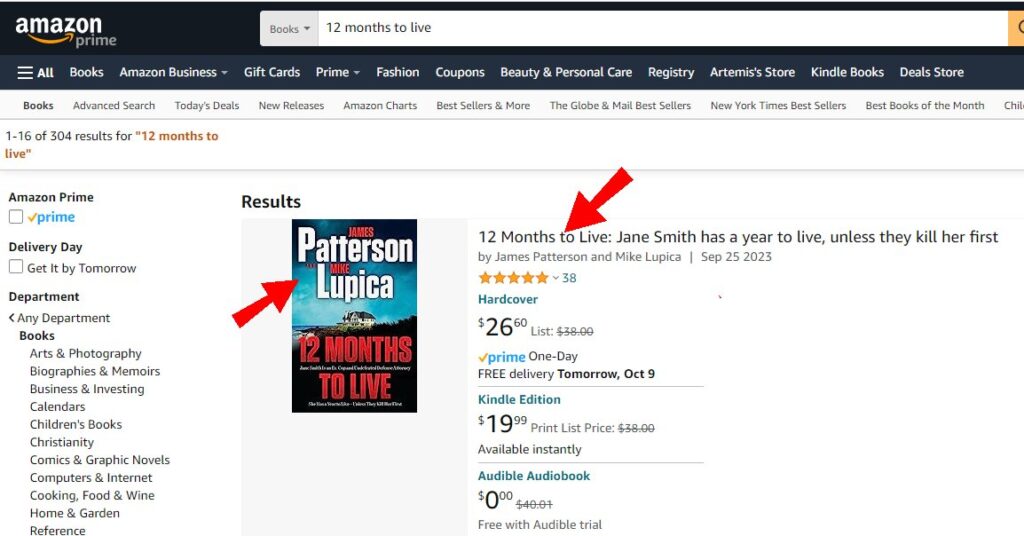
Step 4.2.2 Understanding The Book’s Detailed Product Page
Here, on the book’s detailed product page, you will find a wealth of information. Things like:
- A detailed description or blurb about the book
- Customer reviews and ratings
- Information about the author
- The format the book comes in (Hardcover, Paperback, Kindle Edition, Audible Audiobook)
- “Look inside” feature (a preview of the book’s content, if available)
- Details on book length, publisher, ISBN, and more
- Options to buy new, used, or in different formats
- Etc
Select the format you want. Then click on the “Used” link under the format.
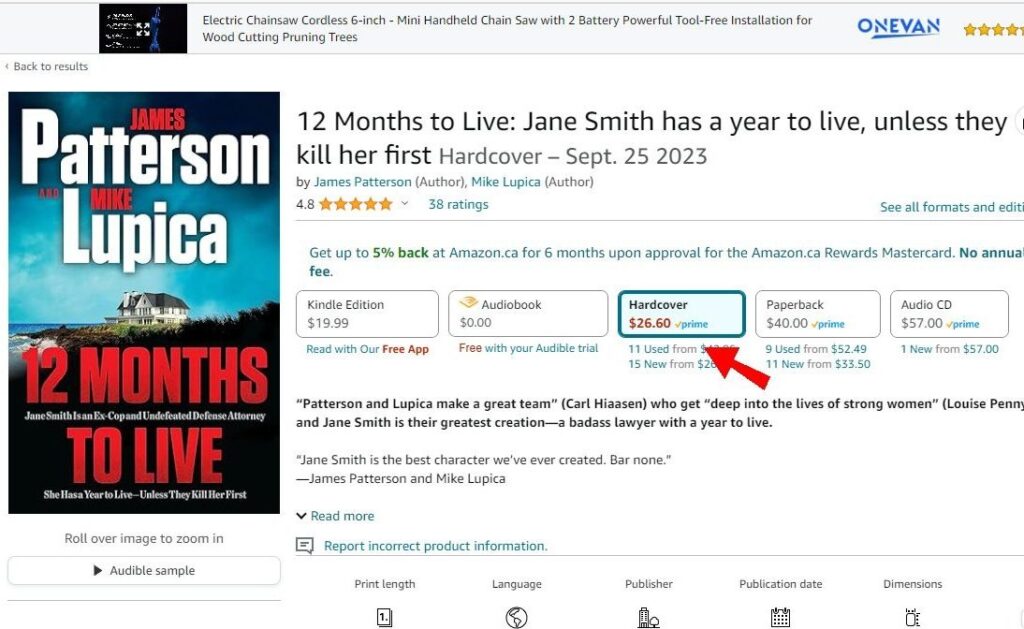
Step 4.2.3 Using Filters To Specify The Amazon Used Books Condition
A new window will appear on the right side of the screen. Here you will see among other things, a list of the available used copies of the book. You will also be able to apply filters and specify the condition of the used book that you’re looking for. The filters include:
- New
- Used
- Like New
- Very Good
- Good
- Acceptable
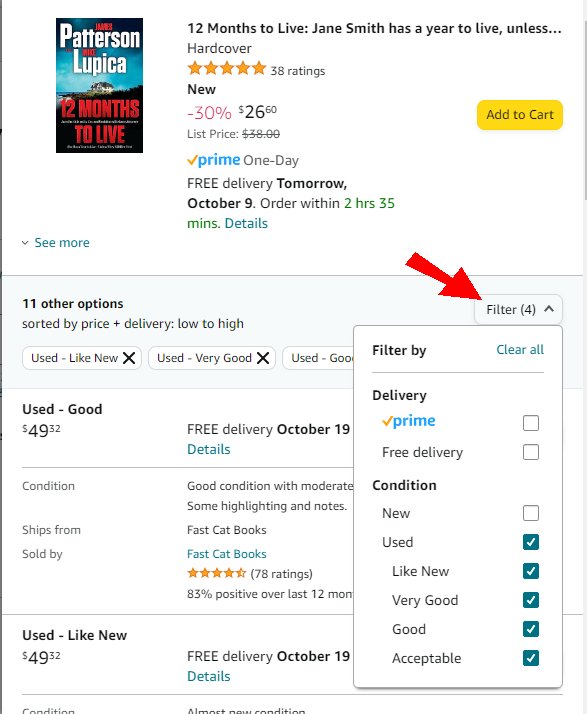
Step 4.2.4 Review the Amazon Used Books Condition Results
Now that the Amazon used books condition has been applied, review the results presented to you.
The condition of the used book is of course mentioned. It can vary anywhere from “Like New” to “Acceptable” depending on the filters you applied. Certain sellers even include short descriptions to give more detail about the condition of the book. It also It displays the:
- Price of the book. (In some cases, it may display both the list price and the discount).
- Delivery details (free delivery if applicable and the delivery date).
- “Ships from” information.
- Seller’s name beside the “Sold by” category and the star ratings of each seller.
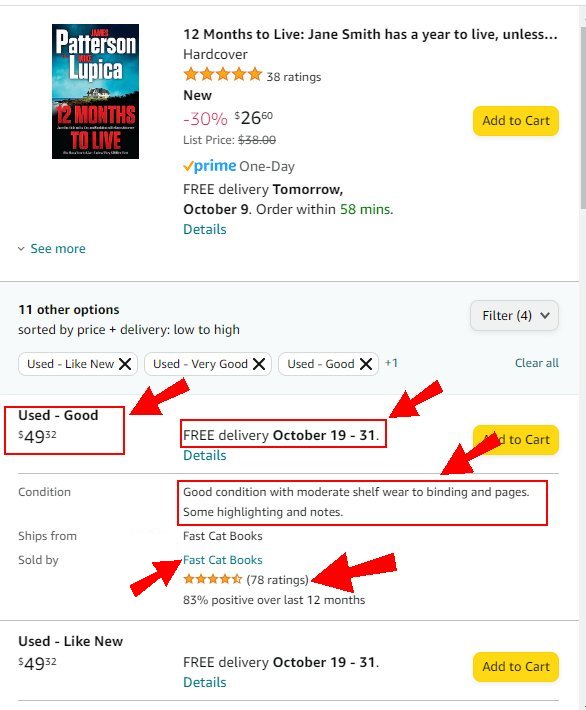
Step 4.2.5 Scrutinizing Seller Ratings
As you peruse the book’s listing, pay close attention to the seller’s reputation and feedback. As a matter of fact, Amazon has thoughtfully instituted a seller rating system to assist you in evaluating trustworthiness. In truth, sellers boasting high ratings and positive feedback are usually safe bets.
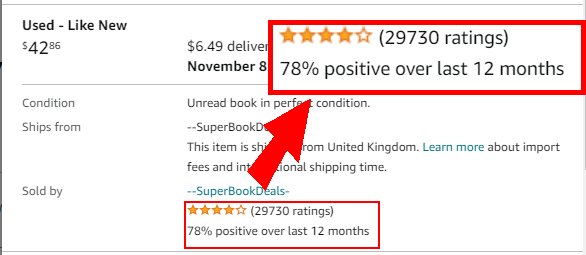
Step 5: Selecting Your Amazon Used Books
If the book’s condition and the seller’s track record align with your preferences, take the next step. Select your Amazon used book by clicking the “Add to Cart” button. As a result, this action gracefully places your chosen book in your digital shopping cart.

Step 9: Review Your Cart
Before advancing to the checkout phase, take a moment to thoroughly review the contents of your cart. Ensure that the selected book is accurate and that the overall cost, inclusive of any shipping fees, suits your budget.
Step 10: Proceed to Checkout
Ready to finalize your purchase? Click the “Proceed to Checkout” button to initiate the checkout process. Simply follow the prompts to validate your shipping address and chosen payment method.
Step 11: Place Your Order
After meticulously verifying your order details, click the “Place your order” button. Expect an order confirmation email to land in your inbox shortly after that.
Step 12: Track Your Order
Stay informed about the progress of your order through your Amazon account. Additionally, Amazon thoughtfully provides estimated delivery dates, and you’ll receive timely notifications as your eagerly awaited books make their journey to your doorstep.
Conclusion
As you can see, buying used books on Amazon is a fairly easy task. Moreover, incorporating used books into your collection is a convenient and budget-conscious approach. By navigating these straightforward steps, you can seamlessly unearth the books you covet, guarantee their quality, and eagerly anticipate their arrival at your doorstep. Happy reading!
Best James Patterson Books You Should Read Right Now…
What are the best James Patterson books you should read right now…
Are you a fan of mystery, thriller, and crime fiction? Chances are you’ve read at least one book by James Patterson. He is one of the most prolific and popular authors of all time. He has over 300 books to his name and millions of fans around the world. But with so many titles to choose from, how do you decide which ones are worth your time?
To help you out, we’ve compiled a list of james patterson best selling books. It’s based on the ratings and reviews of Goodreads members. These are the books that have captivated, entertained, and shocked readers with their twists, turns, and suspense. They are James Patterson books in order of publication date, not popularity.
[Click here to access our “James Patterson books in order printable list“. It’s an extensive list of all his work].
1. Along Came a Spider (December 1, 1993)
To begin with, this is the first of the best James Patterson books. It’s also the first book in the Alex Cross series. It starts with this enthralling novel, laying down the foundation for a succession of thrilling adventures. Enter Alex Cross. He is an astute detective with a sharp mind, who also possesses expertise in forensic psychology. He has exceptional skills and abilities. This is especially true when it comes to chasing down heinous criminals and deciphering the minds of diabolical serial killers.
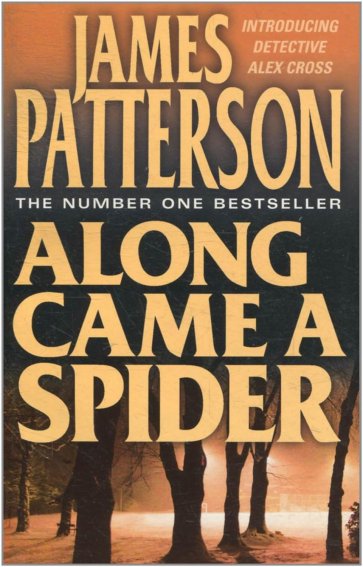
In this narrative, the antagonist that Cross is pitted against is the cunning and dangerous Gary Soneji. Soneji is not just any criminal; he meticulously selects his victims, focusing particularly on the offspring of high-profile politicians. His modus operandi involves both kidnapping and cold-blooded murder. This sends shockwaves through the community and challenges Cross in ways he could never have anticipated.
The story’s gripping tension and intricate plot caught the attention of film producers. This lead to its adaptation onto the big screen in 2001. The movie version boasted a stellar cast. With the legendary Morgan Freeman stepping into the shoes of Alex Cross. The talented Monica Potter played a pivotal role, further enhancing the story’s cinematic appeal.
2. Kiss The Girls (January 11, 1995)
The second of the best James Patterson books to read is titled Kiss the Girls. In this riveting continuation of the Alex Cross saga, James Patterson delivers a suspense-packed narrative that showcases his storytelling prowess. This is the second installment in the series. Readers find Detective Cross confronted with a case of terrifying proportions. Two sinister serial killers form a lethal alliance. Operating in different parts of the country, they leave a trail of terror in their wake. They kidnap and brutally torture unsuspecting young women.

The first killer, audaciously calling himself ‘Casanova,’ operates with a chilling smoothness. The other, equally horrifying, dubs himself ‘The Gentleman Caller,’ hinting at an eerie politeness that belies his vicious intent. The two fiends become engaged in a macabre competition. As their crimes escalate, so does the urgency to apprehend them.
A glimmer of hope emerges when Kate McTiernan, a resilient doctor, narrowly escapes Casanova’s clutches and joins forces with Cross. With her firsthand experience and his deductive prowess, the duo embarks on a relentless pursuit. To bring the killers to justice. Their combined determination forms the backbone of this tense thriller.
Drawing audiences worldwide, the gripping plot of “Kiss the Girls” made its way to the cinematic world in 1997. The film adaptation brought together the formidable talents of Morgan Freeman, reprising his role as Alex Cross. Ashley Judd, delivered a powerful portrayal of Kate McTiernan. Their on-screen chemistry and the movie’s intricate plot twists further solidified the story’s enduring appeal.
3. 1st to Die (March 5, 2001)
“1st to Die” is the third of the best James Patterson books that you should read. Here, the author introduces readers to a compelling new universe. This inaugural novel in the acclaimed Women’s Murder Club series. It takes place in San Francisco. The story artfully weaves together the lives and expertise of four indomitable women. Each of them brings a unique strength to their informal partnership, making them a formidable force against crime.
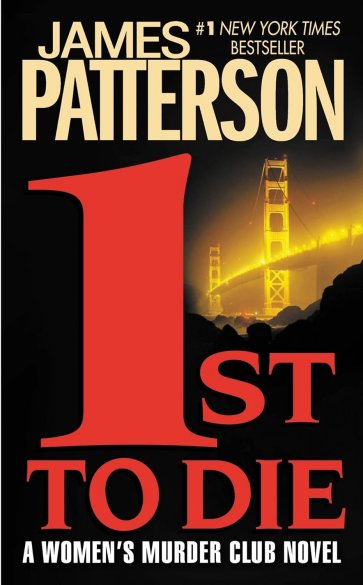
At the heart of the team is Lindsay Boxer, a dedicated homicide inspector with a keen investigative eye. Claire Washburn is the medical examiner. She provides invaluable insights into the victim’s last moments. Jill Bernhardt, with her sharp legal acumen, serves as an assistant district attorney. She ensures that justice is pursued in the courtroom. Rounding out the quartet is Cindy Thomas. A tenacious crime reporter whose knack for uncovering details and getting the inside scoop is second to none.
Together, these four women find themselves delving into a harrowing case that sends shockwaves through the city. A shadowy killer is targeting newlyweds, turning what should be the most joyous days of their lives into unspeakable tragedies. As the string of brutal honeymoon murders grows, the Women’s Murder Club unites. Their varied talents and knowledge are set to unmask the perpetrator. Patterson masterfully crafts a tale filled with suspense, camaraderie, and a race against time to prevent the next tragedy.
4. The Angel Experiment: A Maximum Ride Novel (April 1, 2005)
Fourth in line of the best James Patterson books to read is “The Angel Experiment”. Here the author takes a bold leap into the realm of science fiction, crafting a world both mesmerizing and unsettling. This marks the beginning of the enthralling Maximum Ride series. It’s an adventure that dives deep into the implications of genetic modification and the complexities of identity.

The story centers on an extraordinary group of youngsters. Each bearing wings and the power of flight. A testament to the boundaries that science can push. Our protagonists are a diverse group. Max is the determined leader. Fang is the enigmatic silent type. Iggy, who, despite being blind, possesses unique abilities. Nudge, whose incessant curiosity is both a gift and a curse. Gasman, known for his explosive personality. And Angel, the youngest, who carries secrets beyond her age.
These winged children are the result of clandestine experiments conducted by an enigmatic institution known simply as “The School.” More prison than educational facility, The School’s dark purposes become all too clear when the children decide to break free. Their escape, however, is only the beginning. They are pursued by relentless enemies. They are confronted with the challenge of surviving in an unfamiliar world as they embark on a journey of self-discovery. As they unravel the mysteries of their creation, they also grapple with larger existential questions: What is their place in the world? Why were they created?
Patterson masterfully layers the narrative with thrilling chase sequences. There are moments of introspection, and the bond of friendship that becomes the kids’ strongest weapon against the odds.
5. Suzanne’s Diary for Nicholas (July 16, 2001)
The fifth on the list of the best James Patterson books to read is titled “Suzanne’s Diary for Nicholas.” In a departure from his traditional thrillers, James Patterson delves deep into the human heart with this novel. This standalone novel is a testament to Patterson’s versatility as an author. He can craft a tale brimming with raw emotion, romance, and revelations.

Katie Wilkinson, a vibrant woman deeply in love, is left heartbroken when her boyfriend, Matt Harrison, unexpectedly ends their relationship. In a bid to provide her with closure and perhaps understanding, Matt leaves her a poignant artifact: a diary. This is no ordinary diary, but the intimate musings of Suzanne Bedford, Matt’s tragically deceased wife. It was penned with love and hope. The diary was intended as a legacy for their young son, Nicholas. Ensuring he’d know the depth of love and the story of the mother he lost.
Katie immerses herself in Suzanne’s world. She discovers a woman who lived with passion, faced challenges, and cherished every moment with her family. The diary unveils tales of romance, dreams, and the sheer force of life’s unpredictability. But as Katie delves deeper, she also unravels a web of secrets Matt has kept buried. One of which holds the power to change everything she thought she knew about him.
Through Patterson’s eloquent prose, readers are invited on a journey. The journey explores the complexities of relationships. The pain of loss, and the power of love to heal even the deepest wounds.
6. School’s Out – Forever: A Maximum Ride Novel (May 23, 2006)
“School’s Out – Forever” takes the sixth position on the best James Patterson books to read list. It serves as a compelling sequel in the Maximum Ride series, offering readers another exhilarating dive into the lives of the remarkable winged children. The stakes are raised even higher in this installment. Our young heroes find themselves entangled in a vast and intricate conspiracy that threatens the very fabric of their world.
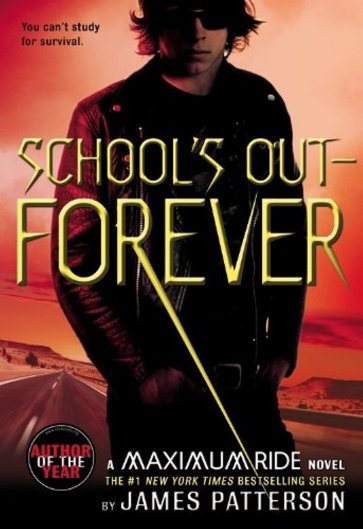
Our familiar protagonists – Max, Fang, Iggy, Nudge, Gasman, and Angel – find themselves navigating an ever-evolving terrain of challenges. From attempting to assimilate into the norms of society by attending school, to uncovering the dark machinations that loom on the horizon, their journey is anything but simple.
Throughout their adventure, they cross paths with a variety of characters, each introducing a new layer of complexity to their mission. The FBI, a formidable force with its own agenda, becomes an unexpected ally. Yet, the lines between friend and foe blur when Max starts hearing an enigmatic voice in her head, guiding and cautioning her in equal measure. This voice becomes a puzzle unto itself, its origins and intentions shrouded in mystery.
Arguably the most menacing of their adversaries are the Erasers: terrifying mutant hybrids of wolf and human. Engineered with lethal abilities, these creatures relentlessly pursue the winged kids, serving as chilling reminders of the unnatural world from which they hail.
As the plot unfolds, Patterson seamlessly combines adrenaline-pumping action with deep emotional moments, further endearing the Maximum Ride characters to the readers and ensuring they remain invested in the fate of these extraordinary youths.
7. 2nd Chance (March 4, 2002)
“2nd Chance” takes the seventh spot on the list. This is a riveting continuation of the Women’s Murder Club series penned by James Patterson. Delving deeper into the lives and relationships of the formidable foursome—Lindsay Boxer, Claire Washburn, Jill Bernhardt, and Cindy Thomas—this installment intertwines personal narratives with an intense criminal investigation, offering a multi-layered reading experience.
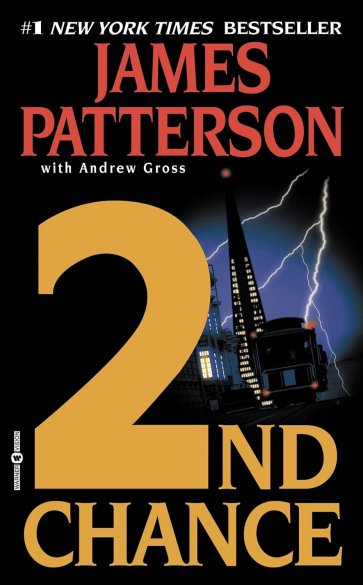
As the story unfolds, San Francisco becomes a backdrop to a sinister pattern of killings. The murders, at first glance, might seem unrelated, but as the Club delves deeper, a chilling link emerges. The shadowy organization known as The Patriots appears to be at the heart of this malevolence. Their motives are rooted in deep-seated prejudice and hate.
The external threat posed by The Patriots is palpable. However, a more insidious danger looms closer than the women could ever have imagined. In their quest for justice, they stumble upon betrayals from within. This forces them to confront the fact that trust, once broken, can have deadly consequences. This unforeseen internal treachery adds another dimension to their challenge, pushing their friendship and professional collaboration to its limits.
In “2nd Chance,” Patterson masterfully blends fast-paced investigative sequences with intimate moments. This approack explore the dynamics of friendship, trust, and loyalty. It’s a tale that seeks to uncover the mystery behind the murders. It also delves deep into the bonds that tie the protagonists together. This is a classic example of yet another James Patterson best selling book.
8. Sam’s Letters to Jennifer (June 28, 2004)
“Sam’s Letters to Jennifer” comes in at number eight. Here, James Patterson elegantly weaves a tapestry of romance, nostalgia, and whispered secrets. This standalone novel marks a departure from Patterson’s trademark thrillers. It offers readers a soul-stirring journey into the recesses of the heart.
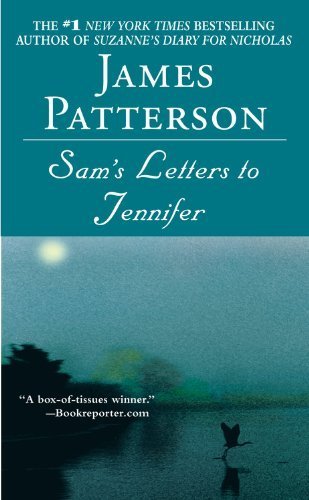
The story pivots around Jennifer Parker. She is a journalist who has climbed the ladder of success, yet finds herself drawn back to the comforting embrace of her roots when tragedy strikes. Her beloved grandmother, Sam, succumbs to a stroke, pulling Jennifer back to the town where memories linger on every corner.
Within the confines of Sam’s home, Jennifer stumbles upon a trove of deeply personal letters addressed to her. Through these heartfelt notes, Sam unfurls the tapestry of her own life, revealing the passions that burned brightly, the heartaches that tested her, and the undying love she held for Jennifer. Each letter peels back layers of Sam’s history, gifting Jennifer with insights into her family’s past and the unspoken truths that shaped their lives.
As Jennifer grapples with the revelations from the letters, she also encounters a blast from her own past: Brendan Collins. Once a cherished childhood companion, Brendan has since transformed into a captivating doctor whose presence reignites feelings long buried. Their rekindled bond, interspersed with the wisdom imparted through Sam’s letters, challenges Jennifer to reevaluate her own choices and the paths she’s taken.
Through evocative storytelling, Patterson crafts a narrative that celebrates love in its myriad forms, emphasizing the ties that bind generations and the redemptive power of reconnection.
9. Saving the World and Other Extreme Sports: A Maximum Ride Novel (May 29, 2007)
This novel is ninth on the best James Patterson books to read list. This is the third captivating installment of the Maximum Ride series. It’s titled “Saving the World and Other Extreme Sports”. Here James Patterson raises the stakes to an unparalleled height. He thrusts our beloved winged protagonists into a battle. A battle for their survival, and for the very fate of humanity.
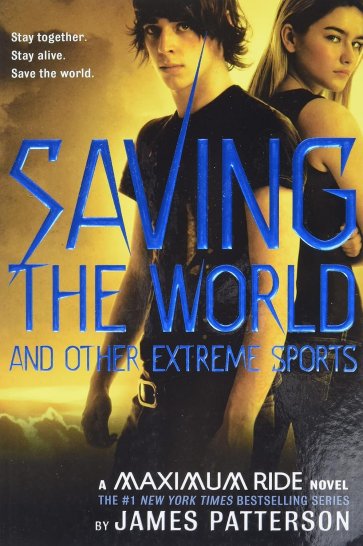
The story evolves as Max, Fang, Iggy, Nudge, Gasman, and Angel uncover a nefarious plot that threatens to cast the world into irreparable chaos. The clandestine organization. The School, once the tormentors of their past, is revealed to be orchestrating an apocalyptic scheme: the release of a potent virus with the power to decimate 99% of the global population. The gravity of the situation is unparalleled, and the kids, with their unique abilities, find themselves as the last line of defense against this impending global catastrophe.
However, the external threats are only a part of their challenge. Beneath the high-octane action and the fight against time, the narrative delves into the emotional turmoil and complexities of growing up. Max grapples with burgeoning feelings for Fang, adding layers of vulnerability to her typically stalwart demeanor. Meanwhile, the group is rocked by a shocking act of betrayal from within, with Angel at its epicenter. The dynamics of trust, loyalty, and burgeoning love are intricately interwoven, providing a rich tapestry against the backdrop of their world-saving mission.
In “Saving the World and Other Extreme Sports,” Patterson seamlessly combines heart-pounding action sequences with poignant moments of introspection, offering readers an exhilarating roller-coaster of emotions and events.
10. The Postcard Killers (August 16, 2010)
“The Postcard Killers” stands out as a gripping and chilling thriller, the result of a unique collaboration between the masterful James Patterson and renowned Swedish author Liza Marklund. This novel occupies the tenth spot on the best James Patterson books to read list. The authors weave a tale that spans the vast landscapes of Europe, pulling readers into a dark world of intrigue, suspense, and chilling motivations.
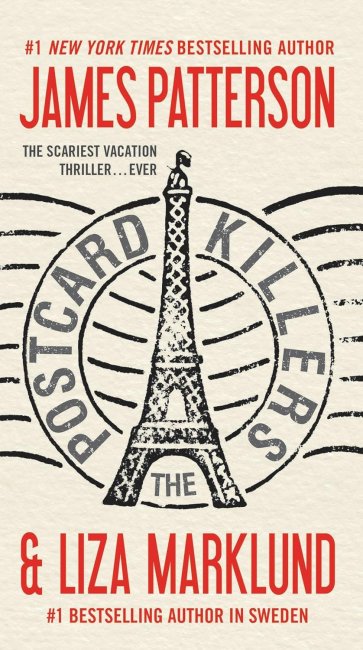
The novel plunges deep into the minds of two sinister serial killers. These perpetrators are not merely content with their heinous acts; they elevate their cruelty to a perverse art form. As they journey across Europe’s iconic cities, they prey upon young, unsuspecting couples, staging their victims in grotesque, tableau-like scenes reminiscent of a morbid gallery display. But their sadistic tendencies don’t stop there. They engage in a twisted game,. They dispatch postcards to local journalists. The postcards include chilling messages and cryptic clues. They effectively taunt those who might seek to unravel their intentions and put an end to their spree.
Enter Jacob Kanon, a tenacious NYPD detective. But for Jacob, this case is deeply personal. The heart-wrenching loss of his own daughter to these killers propels him into the chase with an intensity that’s both relentless and fraught with emotion. Every city, every postcard, and every macabre crime scene draws him one step closer to confronting the murderers, as he grapples with his grief and the overwhelming desire for retribution.
In “The Postcard Killers,” Patterson and Marklund craft an intricate dance of cat and mouse, blending rich European settings with a suspense-filled narrative. The novel serves as a stark reminder of the lengths one will go to for vengeance, and the dark corners of the human psyche that can push individuals beyond the brink.
11. The Black Book (March 27, 2017)
The eleventh of the best James Patterson books to read is titled “The Black Book”. It emerges as a riveting, multi-layered mystery, crafted meticulously through the combined literary prowess of James Patterson and David Ellis. Set against the gritty backdrop of Chicago’s urban tapestry, the narrative unfolds, revealing a tale of suspense, power, and the insatiable quest for the truth.
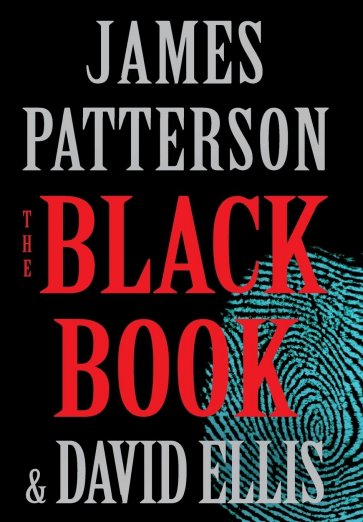
Central to the tale is Billy Harney, a seasoned Chicago detective, whose life takes a harrowing turn after a sinister shooting incident. In a moment of calamity, he loses not just his partner but also his girlfriend, both of whom meet their untimely end. But the trauma doesn’t stop there. Billy survived the assault, but then suffered from amnesia. This left a void in his memories surrounding the crucial events of that fateful night.
As Billy grapples with the loss and attempts to stitch together the fragments of his shattered recollections, whispers of a clandestine “black book” begin to emerge. This elusive book, believed to hold the damning secrets and indiscretions of Chicago’s most influential elite, becomes the crux of the mystery. It’s possible that the very existence of this book, with its explosive revelations, might have been the catalyst for the tragic events that altered Billy’s life.
Determined to unearth the truth and ensnared in a web of intrigue and danger, Billy embarks on a perilous journey. He realizes that every step he takes brings him closer to the book’s dark secrets, but also puts him squarely in the crosshairs of those who will go to great lengths to ensure that certain truths remain buried.
With “The Black Book,” Patterson and Ellis deftly navigate the labyrinthine alleys of power, corruption, and personal vendettas, delivering a pulse-pounding thriller that keeps readers on the edge of their seats until the very last page.
12. The President Is Missing (June 4, 2018)
“The President Is Missing” is the twelfth of the best James Patterson books. Here, James Patterson and former US president Bill Clinton come together to craft a suspense-filled political thriller that resonates with authenticity and intricate knowledge of the highest corridors of power. Drawing from Clinton’s unique perspective and Patterson’s unparalleled storytelling abilities, they produce a tale that seamlessly blends the real-world stakes of political maneuvering with the gripping tension of a high-octane thriller.
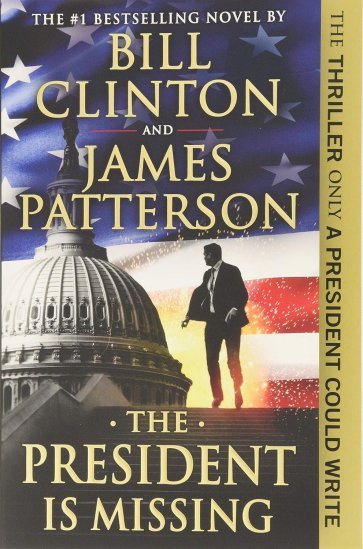
At the heart of the story is President Jonathan Duncan. He is a fictional leader who finds himself ensnared in a web of crises that could potentially spell doom for the nation he’s sworn to protect. A menacing cyberattack looms large, threatening not only to compromise national security but also to deliver a crippling blow to the American economy. Time running out. The stakes sky-high. President Duncan grapples with the complexities of modern-day warfare. There, battles are waged in the intricate tunnels of cyberspace.
Yet, the cyberthreat isn’t the only storm on Duncan’s horizon. A betrayal from within, from someone he’s supposed to trust implicitly—a member of his own cabinet—adds another layer of peril. This internal treachery is compounded by an impending impeachment that casts a shadow over his presidency.
But just when the world is closely watching, waiting for him to make his move, President Duncan does the unthinkable: he disappears from the public gaze. His sudden absence sends shockwaves globally, stirring a maelstrom of speculation, anxiety, and chaos. The world, both allies and adversaries, watches with bated breath, wondering where the leader of the free world has gone and what his absence might mean for global stability.
“The President Is Missing” serves as a testament to Patterson and Clinton’s ability to create a narrative that is both deeply engrossing and reflective of the nuanced challenges faced by world leaders in our complex geopolitical landscape.
13. The 18th Abduction (April 29, 2019)
The saga of the Women’s Murder Club continues with James Patterson’s gripping “The 18th Abduction,” the eighteenth installment of this beloved series. It is thirteenth on the list of the best James Patterson books to read. Once again, readers are invited into the intricate lives and challenges of the four intrepid friends as they navigate a world fraught with peril and unexpected twists.
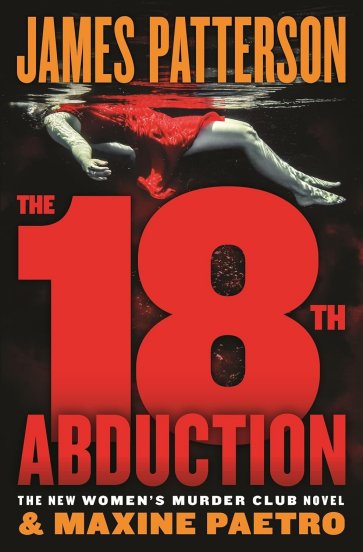
Detective Lindsay Boxer finds herself plunged into the heart of a deeply unsettling case. Three teachers, whose ordinary evening takes a nightmarish turn, vanish without a trace after a sinister abduction from their vehicle. As Lindsay delves into the case, she’s met with a labyrinth of clues and dark intentions, each revelation more chilling than the last.
Yet, the teacher’s abduction isn’t the only storm Lindsay has to weather. Personal and professional lines blur when her husband, Joe, becomes entangled in a high-stakes international investigation. As the implications of his involvement unfold, Lindsay confronts the possibility that the very foundations of their marriage could be shaken to the core.
In “The 18th Abduction,” Patterson masterfully interweaves a tapestry of suspense, loyalty, and the enduring bonds of friendship. With every turn of the page, readers will find themselves deeply invested in the destinies of these characters they’ve come to know and love.
14. The Warning (August 13, 2019)
“The Warning” is the fourteenth on the list. Here, James Patterson delves into the realms of science fiction, crafting a taut thriller set against the backdrop of an idyllic small town in West Virginia. A cataclysmic explosion rips through a local chemical plant. This shatters the serenity of this close-knit community. Moreover, the town is plunged into chaos and despair.
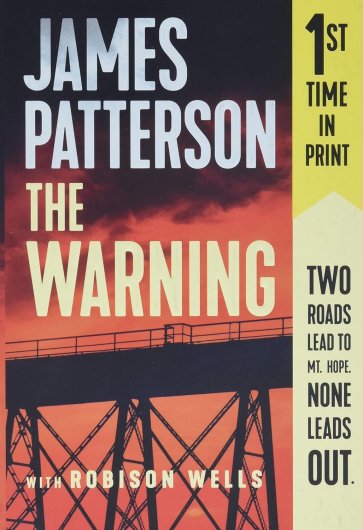
Fast forward two years post the tragic event, and an eerie shadow looms over the town’s survivors. They are plagued by a series of unsettling visions, uncanny occurrences, and phenomena that defy logical explanation. It’s as if the very fabric of reality has been altered, hinting at a more malevolent force at play.
A sense of urgency takes hold as a group of determined residents, bound by their shared trauma and the mysteries that now envelop their lives, band together. They embark on a quest for answers, diving deep into the unknown to uncover the sinister threads linking their present-day anomalies to that fateful day at the chemical plant.
With “The Warning,” Patterson deftly combines the eerie atmosphere of speculative fiction with the pulse-pounding suspense of a thriller, inviting readers to step into a world where the line between reality and nightmare blurs, and where the search for the truth becomes a race against time.
15. The Coast to Coast Murders (September 21, 2020)
In “The Coast to Coast Murders,” the combined storytelling prowess of James Patterson and J.D. Barker comes to the fore, delivering a riveting thriller that spans the vast expanse of America’s interstate highways. A mysterious serial killer, as elusive as they are deadly, embarks on a chilling journey across the nation, leaving behind a trail of victims in their wake. This brutal game of cat and mouse unfolds on the open road, making every mile marker a potential crime scene. Number 15. Yet another James Patterson best selling book.
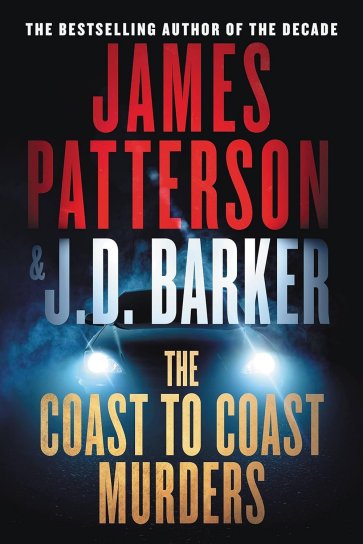
Leading the desperate pursuit is FBI agent Megan Fitzgerald. Determined and tenacious, she dives headfirst into the investigation, hoping to apprehend this predator before another life is lost. But as she delves deeper, the layers of the case begin to peel back, revealing a chilling tapestry of crime that’s more complex than she initially imagined. Megan’s analytical skills are put to the test as evidence hints at the horrifying possibility: this may not be the work of a lone killer, but rather a collaboration of twisted minds.
Further complicating matters is an unsettling discovery that threatens to turn Megan’s world upside down. The case begins to hit closer to home than she ever anticipated, suggesting a deeply personal connection that challenges her objectivity and might even place her in the crosshairs.
“The Coast to Coast Murders” beckons readers into a high-stakes chase across the vast American landscape, blending Patterson’s signature suspense with Barker’s intricate plotting. The result is a novel that keeps readers on the edge of their seats, eagerly turning pages as they journey alongside Megan Fitzgerald in her relentless pursuit of justice.
16. 23 1/2 Lies (September 12, 2023)
Set to captivate readers in September 2023 is James Patterson’s latest offering, “23 1/2 Lies.” This spellbinding mystery is sure to enthrall fans and newcomers alike, showcasing Patterson’s mastery in creating intricate, character-driven narratives. It finalizes the list of best James Patterson books to read.
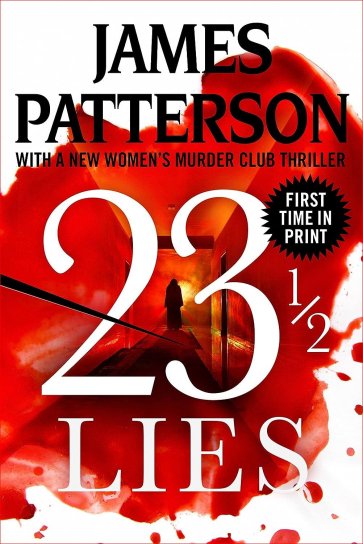
At the heart of the tale is the formidable FBI agent Emily Dockery. With an almost preternatural ability to discern deception, Emily has become a legend within the Bureau for her unparalleled skill in detecting lies. This unique talent not only aids her in untangling the web of deceit that often surrounds criminal investigations but also serves as a tool in her personal quest to unearth the enigmatic mysteries of her own past.
However, her skills face their ultimate test when a meticulous serial killer emerges on the scene. This murderer, rather than concealing his actions, leaves a trail of half-truths in his wake—riddles designed to taunt and challenge their pursuers. Each clue is a game, a blend of fact and fiction, that only someone of Emily’s unique abilities might hope to decipher.
The body count rises. The stakes escalate. Emily is drawn into a high-intensity game of cat and mouse. She is compelled to delve deeper into the mind of a killer who seems to know her every move, all the while wrestling with shadows from her own history that threaten to consume her.
In “23 1/2 Lies,” Patterson expertly weaves a gripping tale of suspense, introspection, and psychological intrigue. Readers will be drawn into Emily Dockery’s world. It is like riding a roller coaster of emotions as they eagerly await the resolution of this electrifying chase.
Concluding – The best James Patterson Books to Read
So there you have it. Some of the best James Patterson books you should read right now.
James Patterson’s extensive bibliography is truly a testament to his storytelling prowess, with each title offering a unique blend of intrigue and excitement. The few we’ve discussed are but a mere glimpse into his literary world, representing just the tip of the iceberg in a sea of captivating tales. Yet, regardless of which book you pick up, you’re bound to dive into a narrative that’s both engaging and expertly crafted.
[Click here to access our “James Patterson books in order printable list“. It’s an extensive list of all his work].
He is renowned for his thrilling mysteries and suspenseful crime dramas. In truth, his versatility extends far beyond these genres. He has effortlessly ventured into the realms of science fiction, romantic tales, and even introspective literary fiction, showcasing an ability to resonate with a broad spectrum of readers. Moreover, his forays into non-fiction further underscore his range, offering thought-provoking insights and explorations into various subjects.
Patterson’s undeniable talent lies not only in his capacity to craft compelling plots but also in his keen understanding of human emotions, relationships, and the complexities of the world we inhabit. His books, regardless of their genre, often touch upon universal themes, making them relatable and timeless.
To label James Patterson as just another writer would be a significant understatement. He is, in essence, a literary maestro, whose works span decades and genres, consistently leaving an indelible mark on the hearts and minds of readers. As you delve into his collection, be it a gritty crime novel or a heartwarming romance, you’ll quickly realize that Patterson’s storytelling magic knows no bounds. So, whether you’re a seasoned fan or a curious newcomer, there’s a James Patterson book waiting to transport you into its enthralling world.
If you’re looking for something from a different author, click on the following link and read the “In The Woods by Tana French: Book Review.
Which Author Holds The Guinness World Record For Most New York Times Best-Sellers?
So, which author holds the Guinness world record for most new york times best-sellers? There are many contenders, but one true titan….
In the literary world, achieving the status of a New York Times best-selling author is a coveted accolade. It signifies not only commercial success but also an author’s ability to captivate readers across the globe. Many authors have basked in the glory of this achievement. Furthermore, only a select few have managed to dominate the New York Times Best Seller list consistently. Today, we delve into the world of literary giants. We will attempt to answer the intriguing question: Who holds the Guinness World Record for the most New York Times best-sellers?
Chapter 1: The Genesis of Best Sellers:
Before we embark on our quest to discover the record holder, let’s delve into the origins of the New York Times Best Seller list. And what it signifies.
The New York Times Best Seller list was created in 1931. It’s abbreviated as NYTBSL. At first, its purpose was to provide readers with a curated list of the best-selling books in the United States. Over the years, this list has become the gold standard for measuring the popularity and success of books. It is divided into several categories, including fiction, non-fiction, and advice/how-to books, making it a comprehensive source of literary recognition.
Chapter 2: The Record Holders:
Now, let’s explore the contenders. Those who have vied for the title of the author with the most New York Times best-sellers. Several prolific authors have left an indelible mark on the literary world, but one name stands above the rest. So, “Which Author Holds The Guinness World Record For Most New York Times Best-Sellers?”….
James Patterson: The Unrivaled Titan:
Transitioning from the history of the NYTBSL, we arrive at the heart of our investigation: James Patterson. There are over 200 million copies of his books sold worldwide. In fact, he has a whopping 114 New York Times best-sellers under his belt. To be sure, James Patterson is the undisputed champion of best-selling authors.
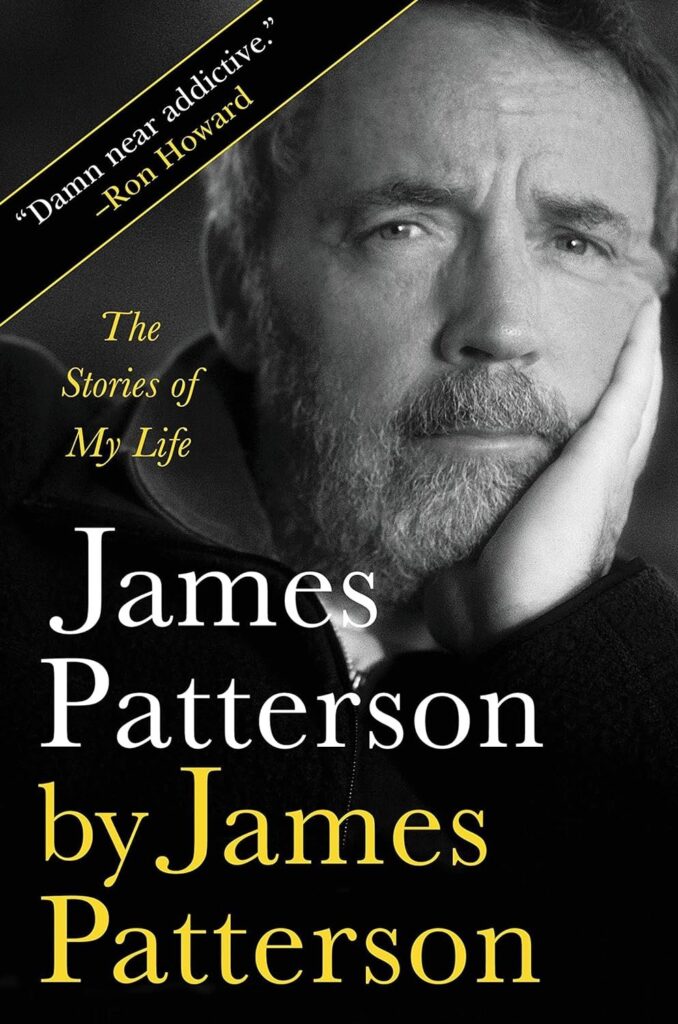
Let’s put things in perspective. Imagine filling an entire bookshelf with just his best-sellers, and you’d still need to make room for more! Patterson’s prolific writing career has spanned decades, and his novels have covered various genres, from suspenseful thrillers to heartwarming romances.
Stephen King: The Master of Horror:
Although not quite reaching Patterson’s record-breaking numbers, Stephen King is undoubtedly a heavyweight in the literary world. King, the master of horror, has penned an impressive 67 best-sellers that have left readers sleepless and captivated. His works, such as “The Shining” and “It,” have become iconic in the world of fiction.
Transitioning to a comparison between these two giants, it’s clear that James Patterson holds a substantial lead in terms of New York Times best-sellers. However, Stephen King remains a formidable contender, known for his distinctive storytelling style and unwavering popularity.
Chapter 3: The Secret Sauce:
With James Patterson and Stephen King in the spotlight, it’s essential to understand what makes their books so irresistibly appealing to readers across the globe.
James Patterson’s Formula for Success:
James Patterson’s formula for success lies in his prolific output and ability to collaborate with other authors. Patterson often works with co-writers to produce a steady stream of novels. Moreover, this allows him to explore a wide range of genres and cater to a diverse readership.
His short chapters and fast-paced narratives keep readers turning pages, making his books accessible and engaging. This strategy has undoubtedly contributed to his record-breaking success on the New York Times Best Seller list.
Stephen King’s Mastery of Horror:
Stephen King, on the other hand, has built his empire on the foundation of horror. His unique ability to tap into universal fears and anxieties has garnered a dedicated fan base. King’s writing is characterized by its depth of character development and intricate storytelling. This draws readers into the minds of his compelling characters.
Transitioning between the two authors’ approaches, it’s evident that while Patterson relies on quantity and accessibility, King thrives on the quality of his storytelling and the emotional depth of his characters.
Chapter 4: The Legacy:
As we contemplate the legacy of James Patterson and Stephen King, it’s worth considering the impact these authors have had on the literary world.
James Patterson’s Legacy:
James Patterson’s legacy extends beyond his impressive record of New York Times best-sellers. He has played a pivotal role in promoting literacy and a love of reading. Through his philanthropic efforts and initiatives like “ReadKiddoRead,” Patterson has worked tirelessly to encourage young readers to discover the magic of books. In truth, his contributions to the literary community are immeasurable, and his name will forever be synonymous with best-selling success.
Stephen King’s Enduring Influence:
Stephen King, on the other hand, has not only scared readers but also inspired generations of writers. His works have been adapted into countless films and television series, solidifying his status as a cultural icon. King’s ability to blend horror with social commentary has elevated the genre and opened doors for new voices in the world of literature.
Transitioning to the legacies of these two authors, it’s clear that both James Patterson and Stephen King have left an indelible mark on the literary world. Patterson’s commitment to literacy and King’s transformative impact on the horror genre ensure that their influence will continue for generations to come.
Chapter 5: The Honorable Mentions:
While James Patterson and Stephen King reign supreme in the world of New York Times best-sellers, it’s essential to acknowledge other notable authors who have achieved remarkable success on the list.
Danielle Steel: The Queen of Romance:
Danielle Steel, often referred to as the “Queen of Romance,” has captivated readers with her heartwarming tales of love and family. With over 40 best-sellers to her name, Steel has a dedicated following that eagerly anticipates each new release.
John Grisham: The Legal Thriller Maestro:
John Grisham is the master of legal thrillers, with 38 New York Times best-sellers to his credit. His gripping courtroom dramas and compelling characters have made him a household name in the world of legal fiction.
J.K. Rowling: The Wizarding World Creator:
J.K. Rowling, famous for her magical “Harry Potter” series, boasts an impressive 13 New York Times best-sellers. While her success may not match the sheer volume of Patterson and King, her impact on young readers and the literary world as a whole is immeasurable.
Transitioning to these honorable mentions, it’s evident that a diverse array of authors has found their place on the New York Times Best Seller list, each contributing to the richness and variety of contemporary literature.
Chapter 6: The Future of Best Sellers:
As we wrap up our exploration of the authors who have achieved New York Times best-seller status, it’s crucial to ponder the future of this prestigious accolade.
Transitioning to the future, one can’t help but wonder who the next record-breaking author might be. In an ever-evolving literary landscape, new voices continue to emerge, captivating readers with their fresh perspectives and innovative storytelling.
As we wrap up our exploration of the authors who have achieved New York Times best-seller status, it’s crucial to ponder the future of this prestigious accolade.
Transitioning to the future, one can’t help but wonder who the next record-breaking author might be. In an ever-evolving literary landscape, new voices continue to emerge, captivating readers with their fresh perspectives and innovative storytelling.
Conclusion:
In conclusion, the author that holds the Guinness World Record for most New York Times best-sellers is James Patterson. With an astonishing 114 best-sellers to his name. While Stephen King and other notable authors have made significant contributions to the world of literature, Patterson’s prolific output and diverse range of collaborations have propelled him to the pinnacle of best-selling success.
As we reflect on the legacies of these authors and the impact they’ve had on the literary world, it’s clear that their stories will continue to resonate with readers for generations to come. The New York Times Best Seller list remains a testament to the enduring power of storytelling and the profound connection between authors and readers.
In a world where the written word continues to evolve and adapt, the pursuit of literary excellence and the dream of becoming a New York Times best-selling author remain as vibrant as ever. As we turn the pages of the future, who knows which author will rise to claim the next Guinness World Record for most New York Times best-sellers? Only time will tell, and the world of literature eagerly awaits its next champion.
So, dear readers, keep turning those pages, for in the realm of books, there are always new stories waiting to captivate our hearts and minds. The journey of literary discovery is an endless adventure, and the best is yet to come.
If you’re looking to find your next book to read , click on this link and see my review of The Girl Who Stopped Swimming by Joshilyn Jackson. It’s an interesting read.
The Brugada Syndrome: From Bench To Bedside: An Overview
The Brugada Syndrome: From Bench To Bedside: Edited by Charles Antzelevitch PhD,, Pedro Brugada MD, PhD,, Josep Brugada MD,, and Ramon Brugada MD. A comprehensive deep dive into the Brugada Syndrome, a genetic heart condition associated with the risk of sudden cardiac death. Moreover, this book covers scientific research on the syndrome and its clinical implications. It bridges the gap between laboratory findings and patient care including causes, symptoms, and treatments.
This is my overview and summary of this all important book…

Book Title: The Brugada Syndrome: From Bench To Bedside
Author: Edited by Charles Antzelevitch PhD,, Pedro Brugada MD, PhD,, Josep Brugada MD,, and Ramon Brugada MD.
Genre: Medical
Publication Date: 12 January 2005
Publisher: Wiley-Blackwell
Pages: 248
Causes of Brugada Syndrome:
This book provides an in-depth exploration into the genetic and molecular causes underlying the syndrome. A heart condition with potentially life-threatening implications. Furthermore, it delves into the intricacies of the syndrome’s origin. It offers readers an understanding of the genetic mutations and environmental triggers contributing to its manifestation.
Symptoms to Recognize:
It shifts the focus from the bench to the patient’s bedside. In truth, the text meticulously describes the distinct symptoms associated with the syndrome. It paints a comprehensive picture of the characteristic ECG patterns, potential arrhythmias, and other clinical signs that physicians and patients should be wary of.
Treatments and Management:
Equally significant, the book elucidates the various treatments available for managing this condition. From pharmacological interventions to implantable devices, the authors present a thorough evaluation of the therapeutic options and their efficacy in ensuring patient safety.
In Conclusion:
In summary, “The Brugada Syndrome: From Bench To Bedside” bridges the gap between scientific research and clinical practice. It ensures that readers are well-equipped with the knowledge to understand and manage this intricate cardiac condition. Very informative and very well put together.
Understanding Heart Disease: Common Symptoms And Treatment Options by Kirsten Cremers: Book Review

Overview
Understanding Heart Disease: Common Symptoms And Treatment Options by Kirsten Cremers is an easy-to-read guide for anyone wanting to learn about heart disease. The author does a great job of turning complicated medical information into simple, clear language that everyone can understand.
Heart Conditions Explained
The book covers several heart conditions, like arrhythmia, tachycardia, bradycardia, Adams-Stokes syndrome, and angina, especially as they are common in women. Cremers explains the symptoms of these conditions in a way that’s easy to follow. For example, she describes how an irregular heartbeat (called arrhythmia) might feel like fluttering in the chest, or how a fast heartbeat (called tachycardia) might cause dizziness and shortness of breath. This helps readers recognize these signs in themselves or others.
Heart Disease Treatment Options
In my opinion, one of the best parts of this book is its focus on treatment options. I loved that section. The author talks about different treatments, from lifestyle changes and medications to advanced procedures like pacemakers and surgeries. She emphasizes the importance of early detection and regular check-ups, showing how quick action can lead to better health outcomes. This gives readers practical steps they can follow to manage their heart health.
Microvascular Angina Life Expectancy
Cremers also covers microvascular angina, a condition that is often overlooked but common in women. She explains its causes, symptoms, and treatments in detail. The book discusses how microvascular angina can affect life expectancy and underscores the importance of managing the condition effectively. By highlighting the specific challenges and prognosis associated with microvascular angina, Cremers provides valuable insights for those affected by this condition.
Some Real-Life Stories
Cremers uses real-life examples and case studies to make her points clearer. The personal stories of people who have successfully managed their heart conditions offer hope and encouragement to readers facing similar issues. These stories show that heart disease can be managed with the right care and support.
Easy to Navigate
The book is well-organized, with each chapter focusing on a specific heart condition or aspect of heart disease. This makes it easy to find information quickly, whether you’re looking for details on a symptom or a treatment. What I really liked is that one chapter builds on the other. This creates a thorough guide that covers all the important parts of heart disease.
Important Preventive Tips for Heart Disease
Besides discussing symptoms and treatments, Cremers also talks about how to prevent heart disease. She highlights the importance of a healthy diet, regular exercise, and avoiding risks like smoking and excessive alcohol consumption. This proactive approach helps readers take charge of their health and make positive lifestyle changes.
Clearing Up Myths and Lies
Cremers also addresses common myths about heart disease, providing clear information that helps readers understand the facts. This is very helpful, as it allows readers to make informed decisions about their health.
Useful Resources
The book includes useful resources, such as a glossary of medical terms and a list of questions to ask your doctor. These additions make the book even more practical, giving readers the tools they need to take control of their heart health.
Conclusion
In summary, Understanding Heart Disease: Common Symptoms And Treatment Options is a great resource for anyone who wants to learn more about heart disease. Kirsten Cremers’ clear and compassionate writing makes it easy for readers to understand and manage their heart health. Whether you’re a patient, caregiver, or just someone interested in heart health, this book is a must-read. It not only educates but also empowers readers to take control of their heart health and live healthier lives.
Click the link below to see it on Amazon.com:
Understanding Heart Disease: Common Symptoms And Treatment Options by Kirsten Cremers
If you’re looking for a good book on Cardiac Arrhythmias, click the link below and see our book review of:
Cardiac Arrhythmias: From Basic Mechanism to State-of-the-Art Management compiled by Ambrose S. Kibos. It’s an absolute must-have for anyone specifically interested in rapid or slow cardiac rhythms and the Adams-Stokes phenomenon.